Posts Tagged ‘violence prevention’
Posted on: April 5th, 2017 by Waterloo Region Crime Prevention Council
On March 30th and 31st 2017, the Waterloo Region Crime Prevention Council hosted the 2017 Canadian Municipal Network on Crime Prevention (CMNCP) at the Walper Hotel. During this two-day event, members of the network, representing 24 different municipalities across the nation, attended interactive lectures led by leaders in public engagement, mental health, and community development. They participated in round table discussions pertaining to increasing both the capacity for crime prevention as a whole and the CMNCP capacity.
Attendees also had the chance to network with other members regarding their experiences with crime prevention in their own municipalities. It was a pleasure to host this hardworking group here in Waterloo Region. We look forward to the continued work ahead!

The attending CMNCP members at the reception hosted by Waterloo Region Chair, Ken Seiling. -Waterloo Region Museum.
A few additional photos of the event proceedings
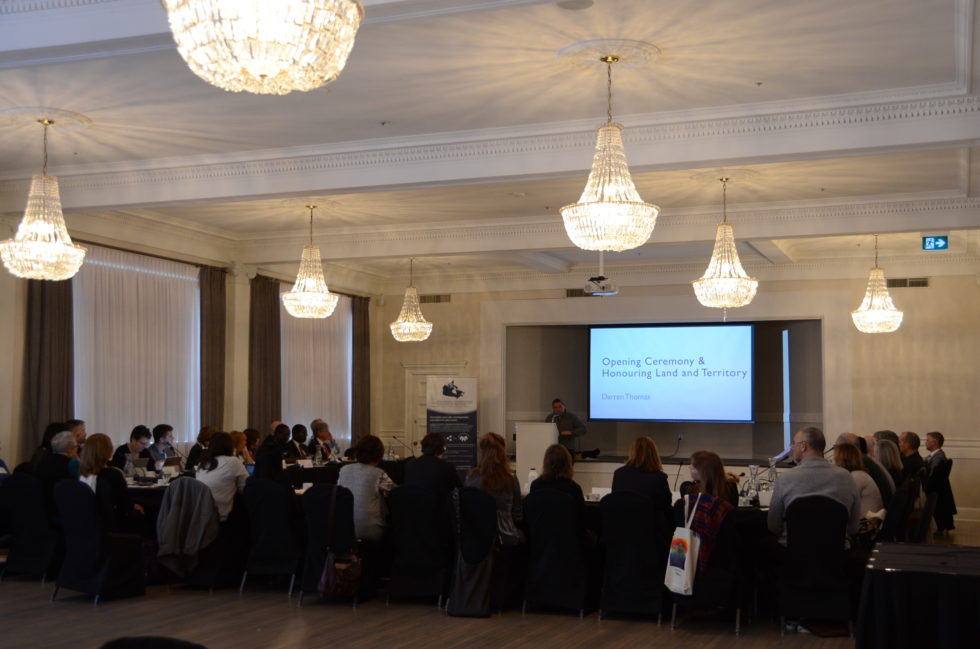
The CMNCP National Meeting was kicked off with an Indigenous Welcome & land Acknowledgement by Darren Thomas
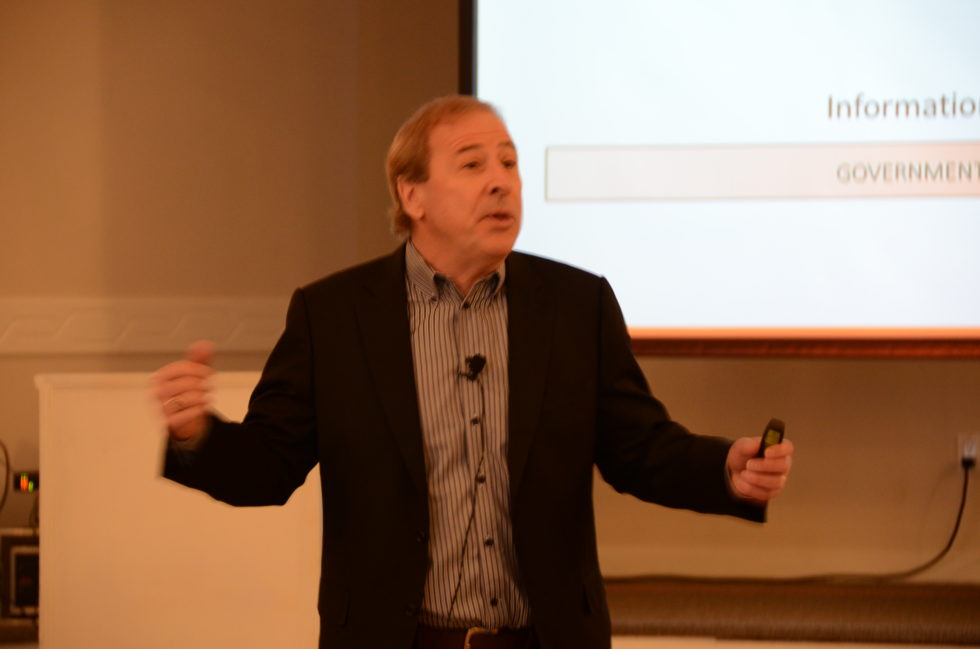
Presentation & Dialogue with Don Lenihan on Public Engagement with Government & Community

Professor Irvin Waller from the University of Ottawa speaking during the CMNCP national meeting
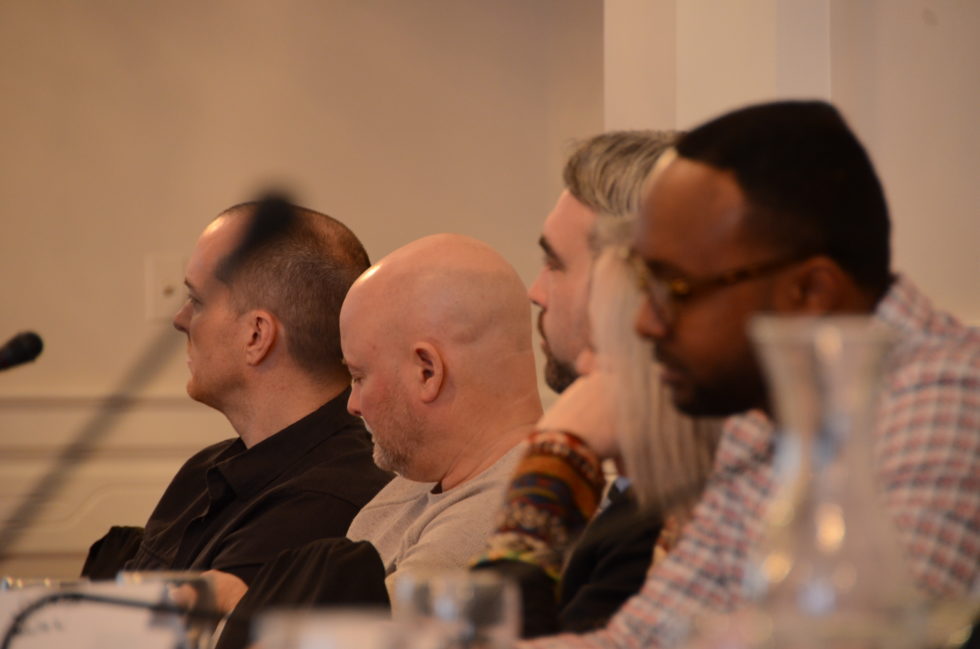
Members of the CMNCP listening intently to a presentation.
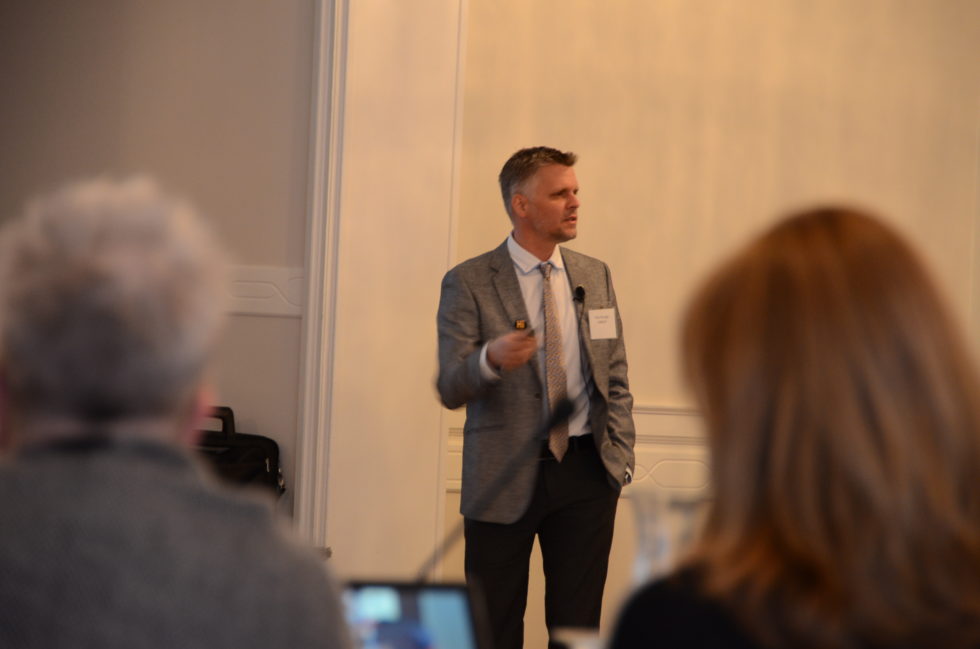
Felix Munger had the distinguished task of keeping the CMNCP proceedings on schedule!
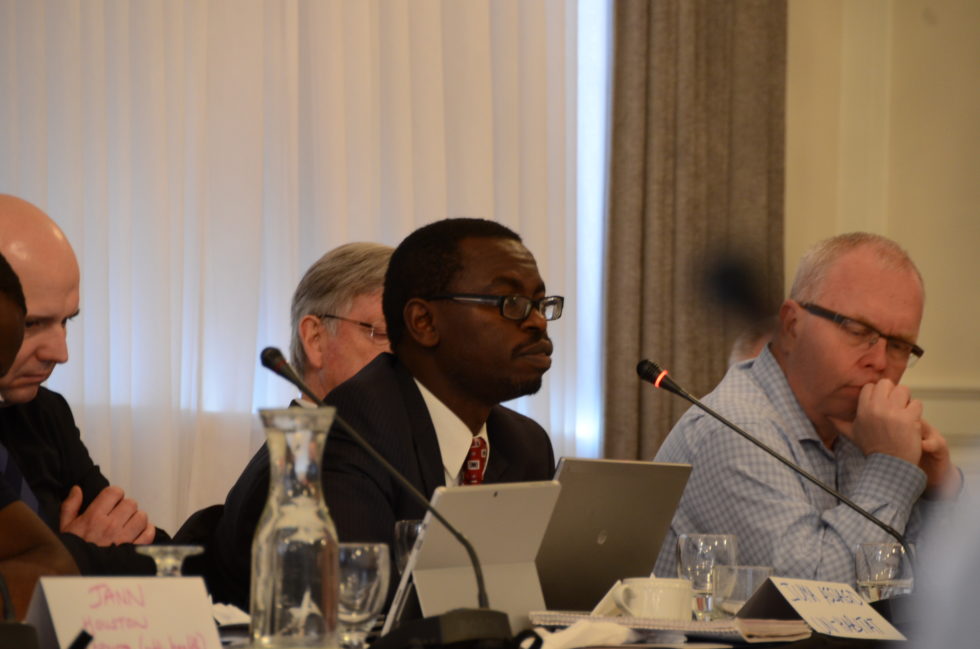
We were very pleased to host Juma Assiago from the UN- Habitat program at CMNCP. Juma supports international cities wanting to address complex crime issues through ‘safe city’ initiatives.
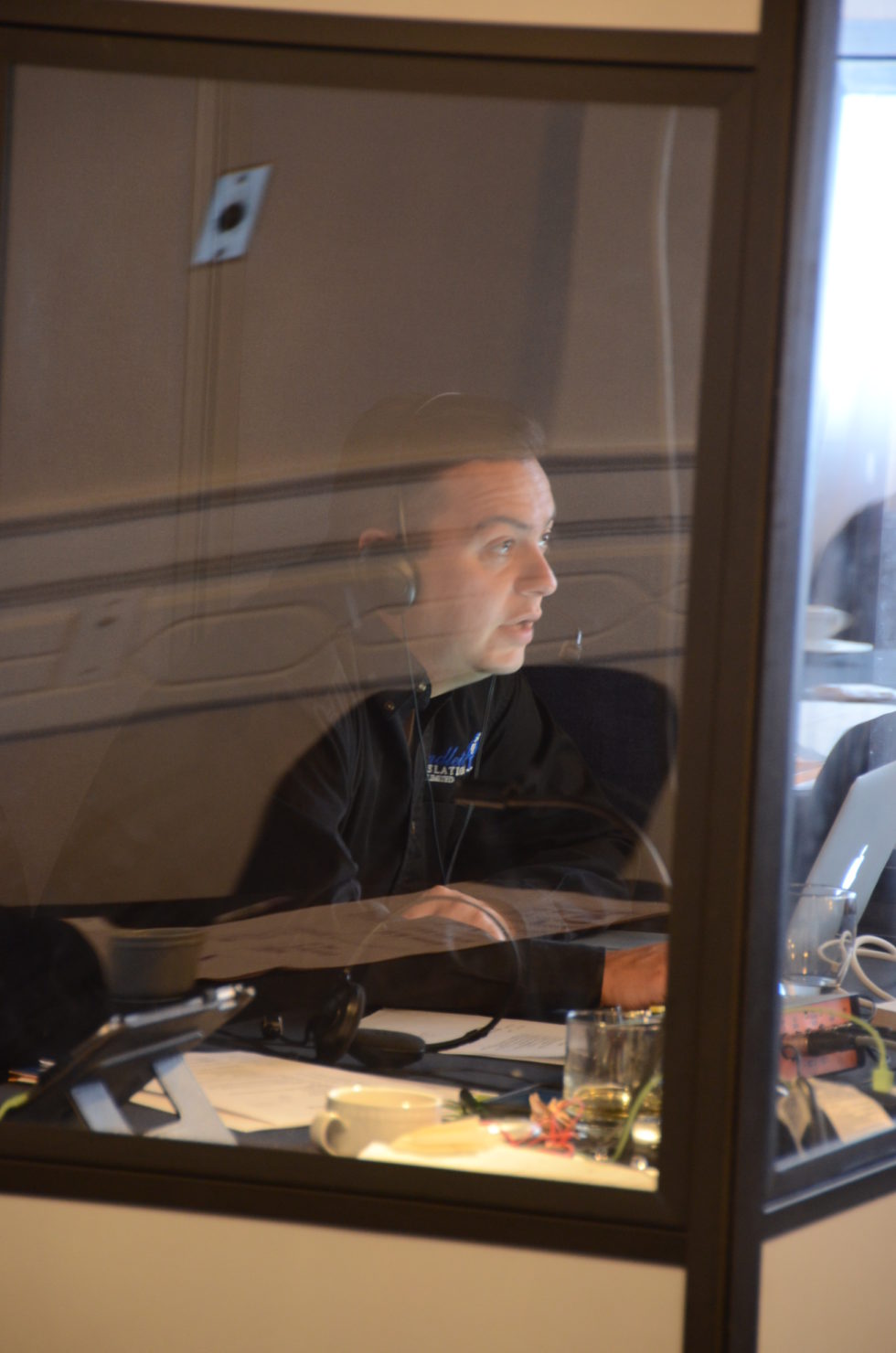
As this was a national meeting, all proceedings were delivered via simultaneous translation
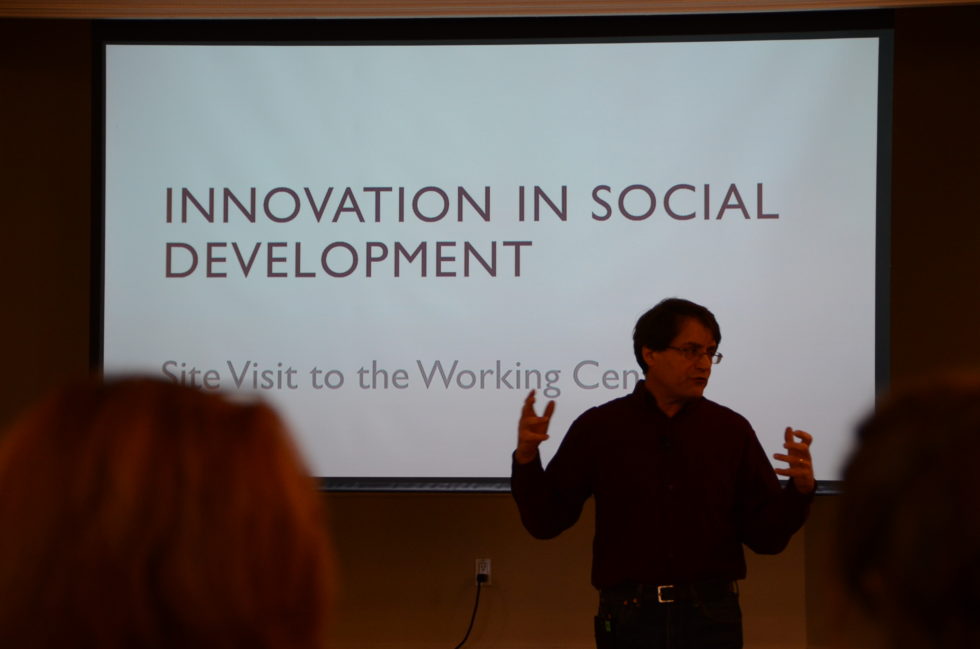
Joe Mencini from the Working Centre explaining the ins-and-outs of the community agency
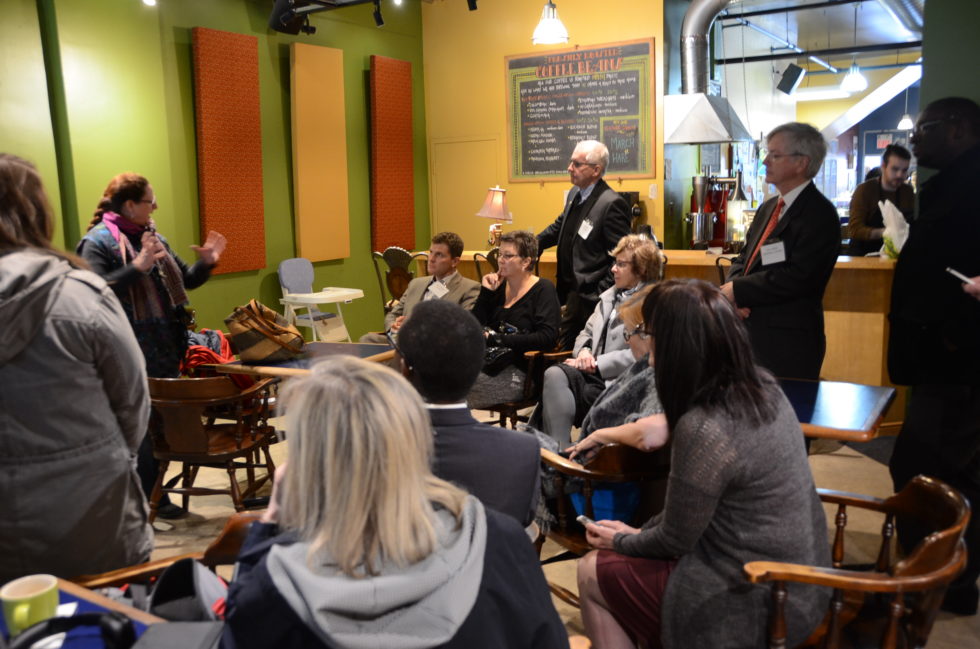
The group gets to leave the meeting table for a field trip to The Working Centre
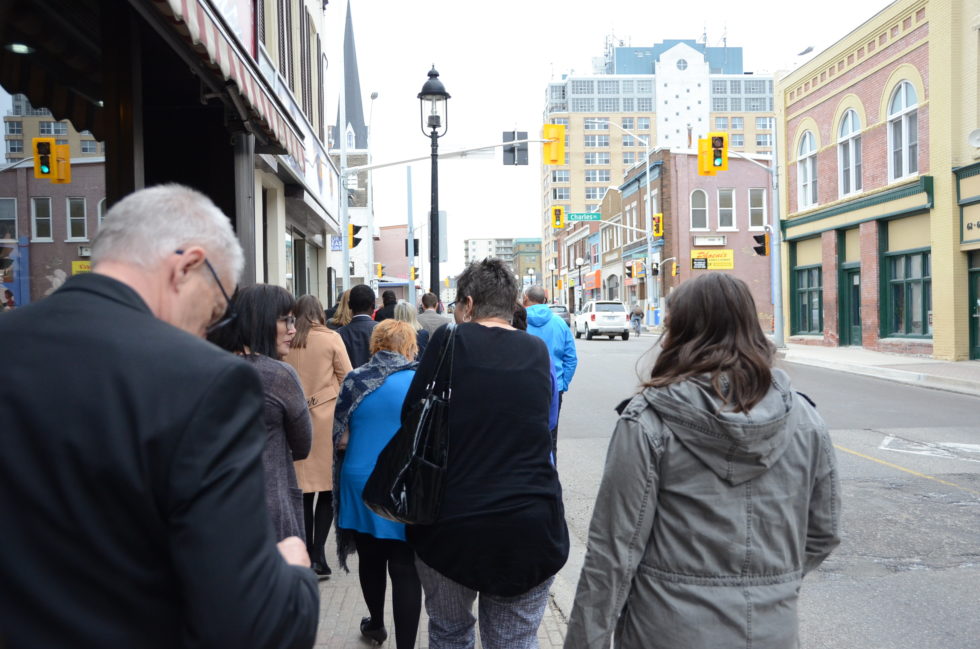
The group gets to leave the meeting table for a field trip to The Working Centre
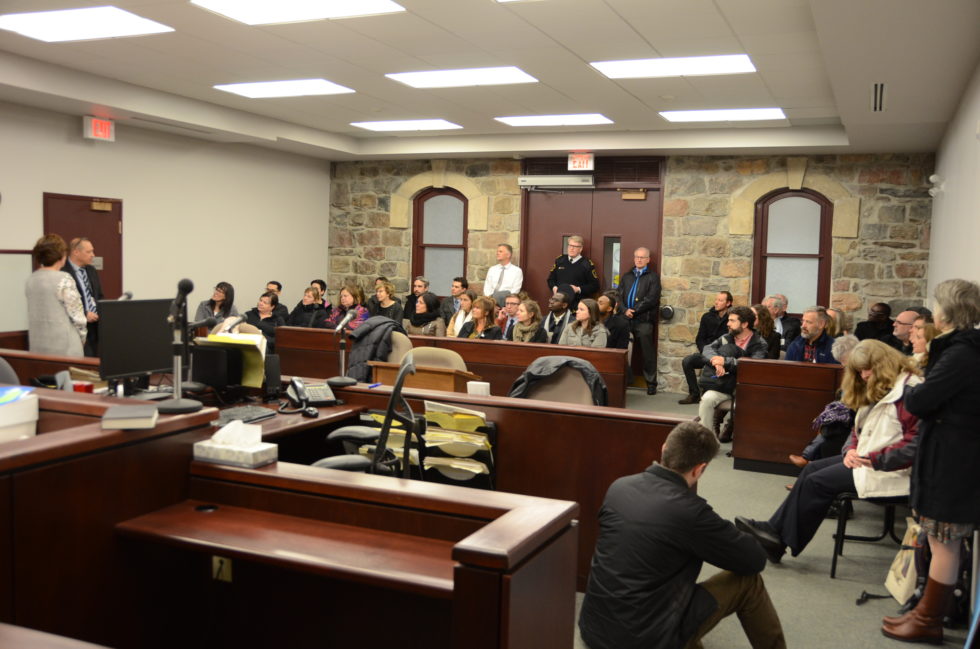
Members of the CMNCP make a visit to the WRCPC office & historic goal in downtown Kitchener

Chief Bryan Larkin of the Waterloo Region Police Services speaking at the Gaol

Regional Chair Ken Seiling was the host for the CMNCP reception held at the Waterloo
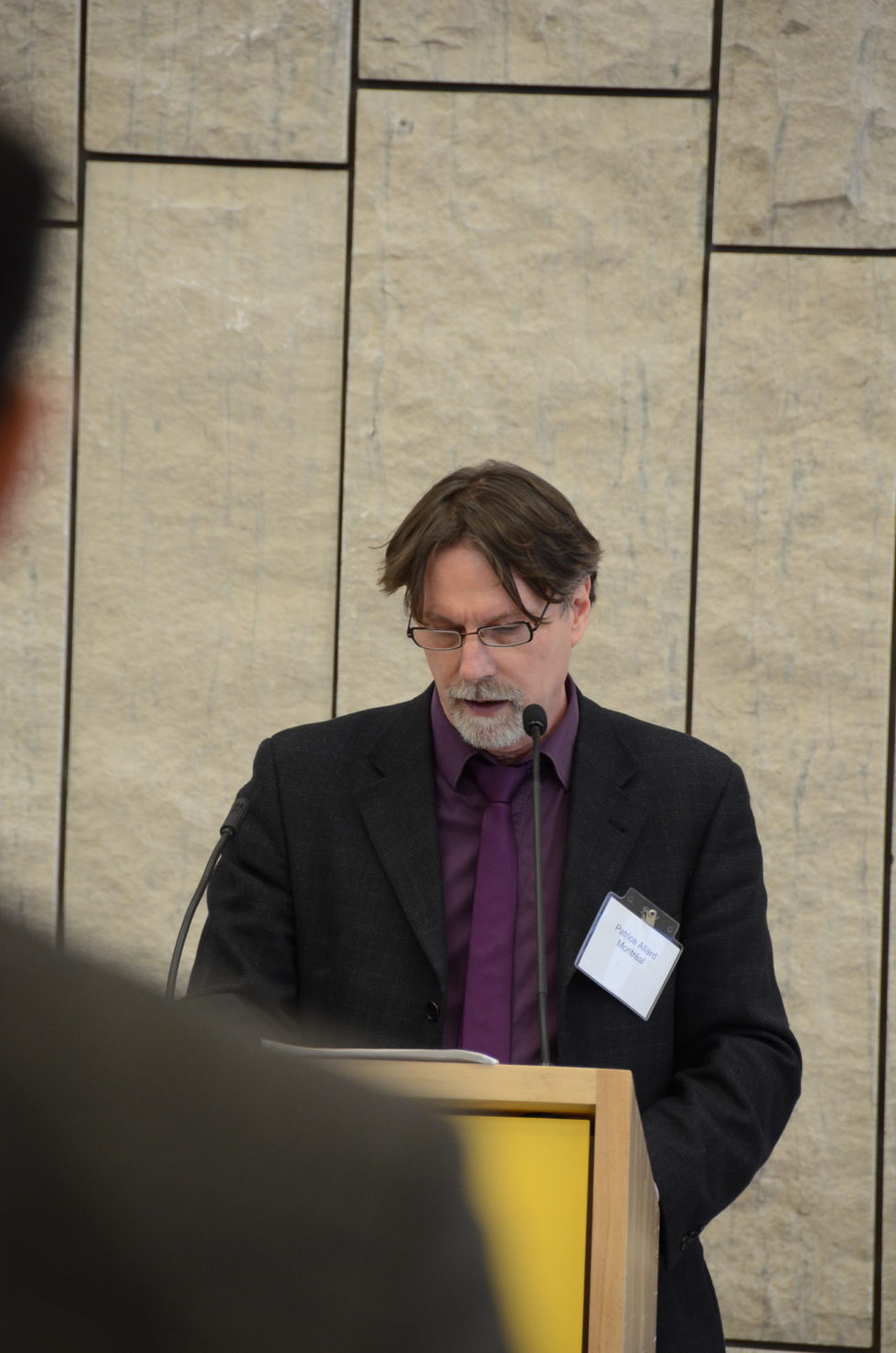
CMNCP Co-Chair Patrice Allard speaking at the reception.
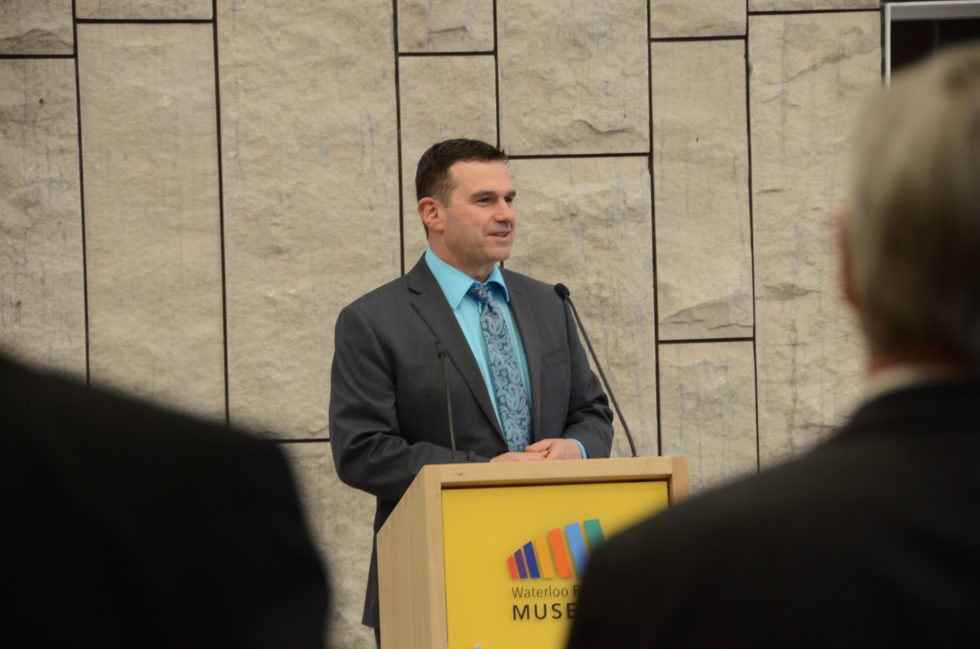
Deputy Chief Kevin Thaler of the Waterloo Region Police Services giving a speech at the reception
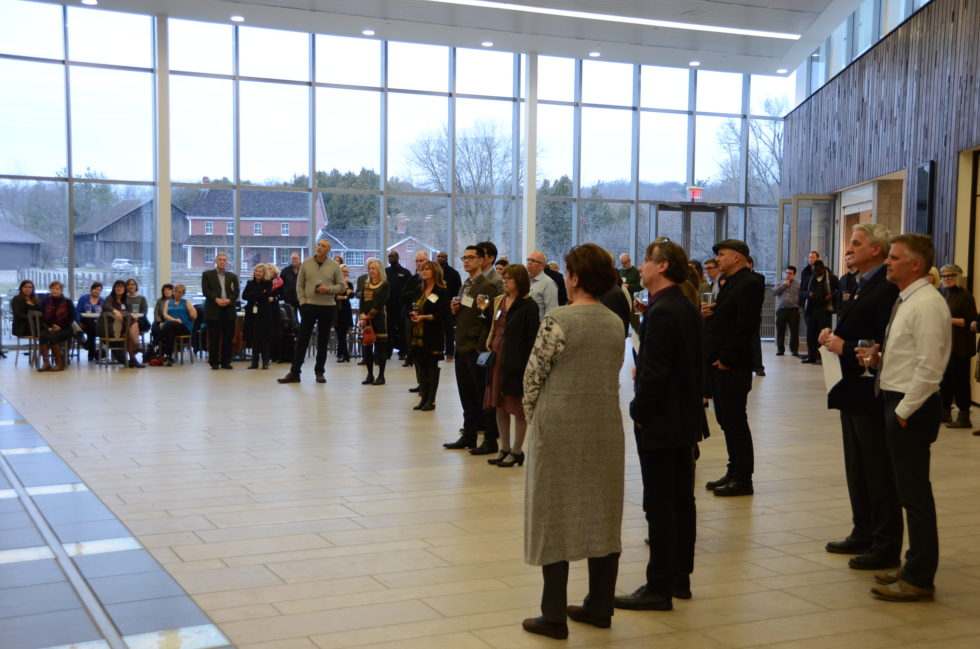
CMNCP members gather around the podium at the Waterloo Region Museum for a welcome address.
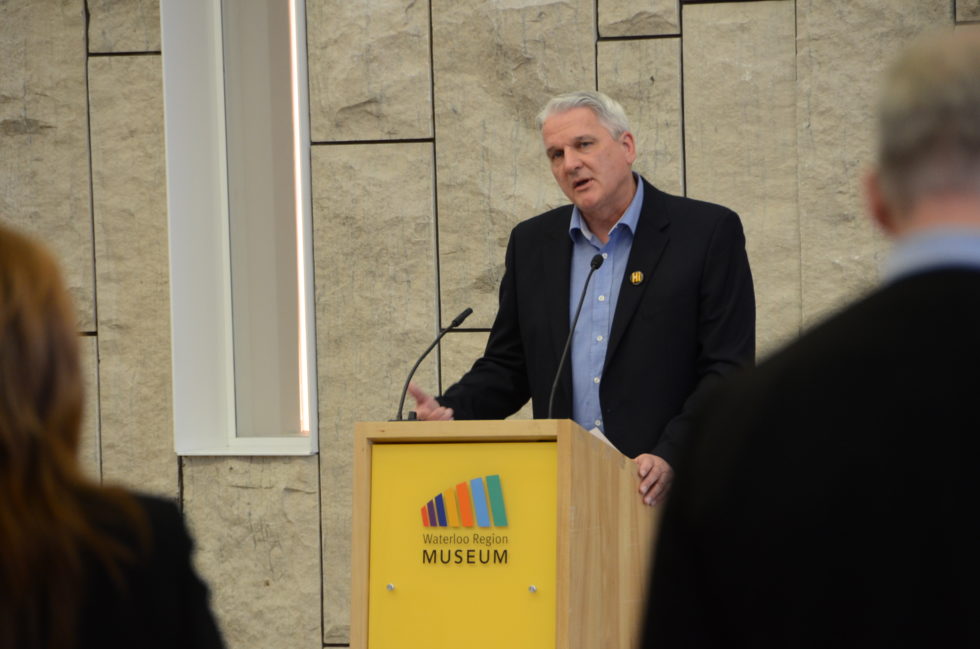
WRCPC Chair Shayne Turner speaking to the guests at the reception
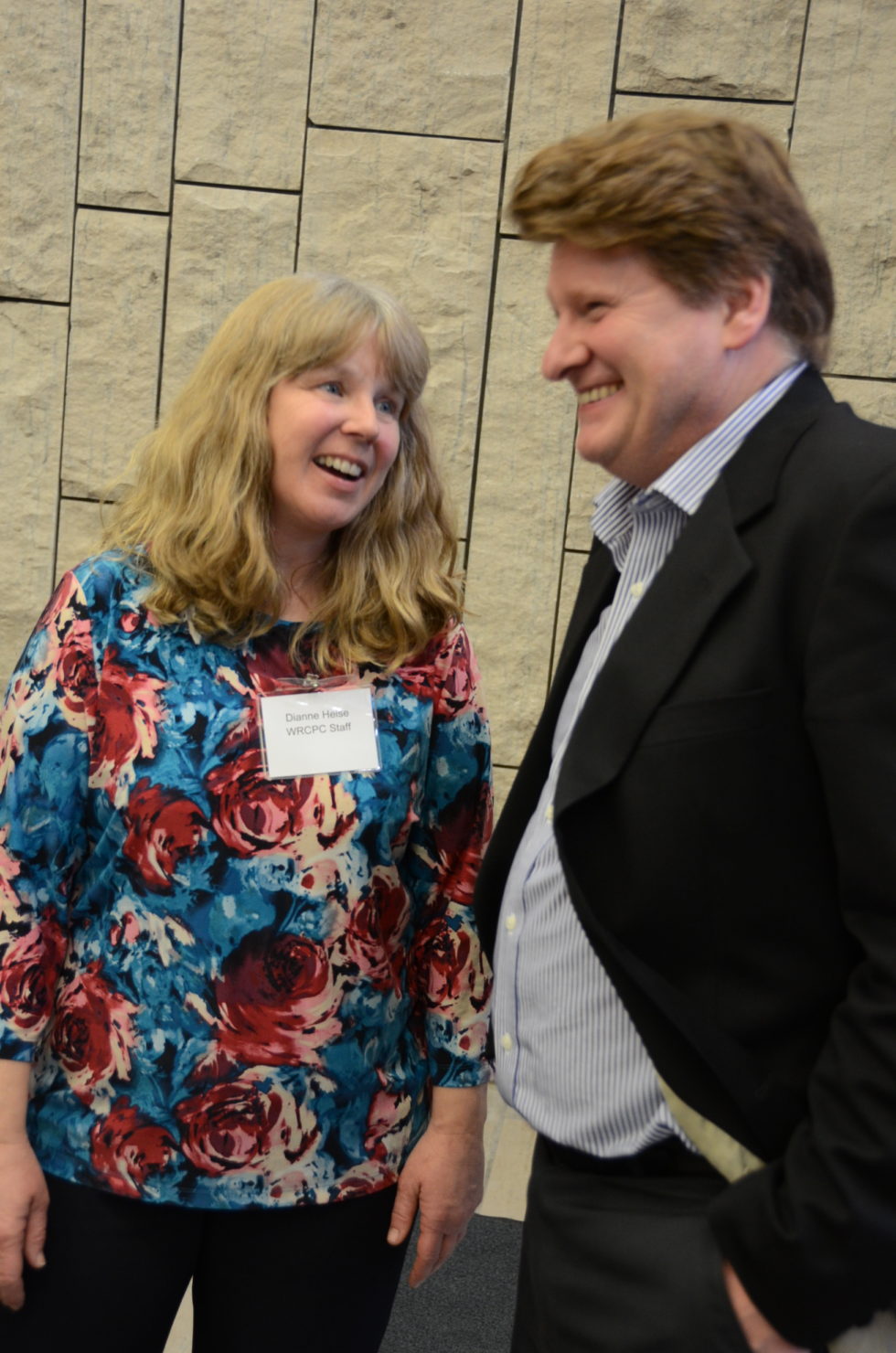
Dianne Hiese & Chris Cowie catching up at the reception
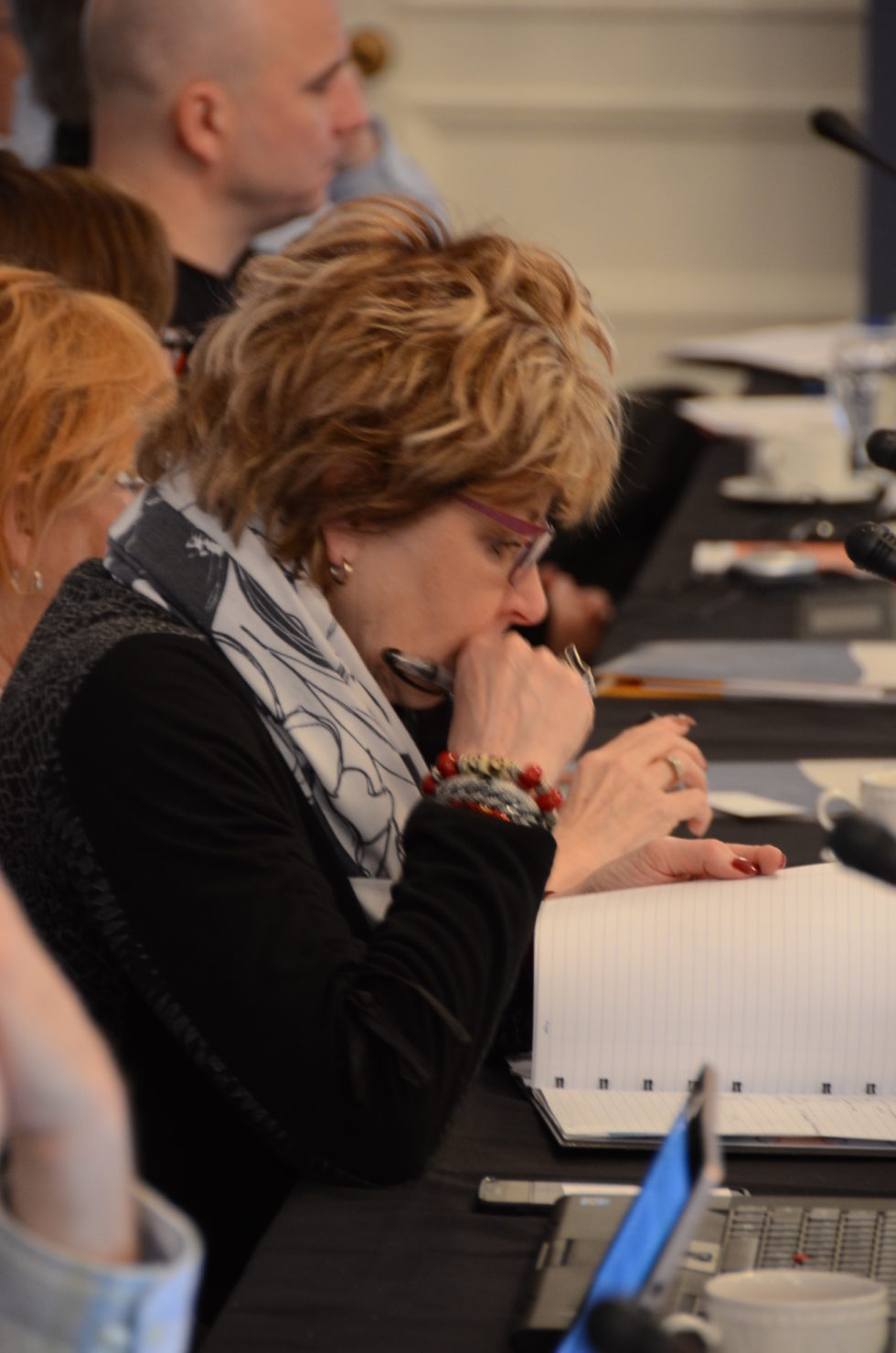
Hard at work during meeting sessions
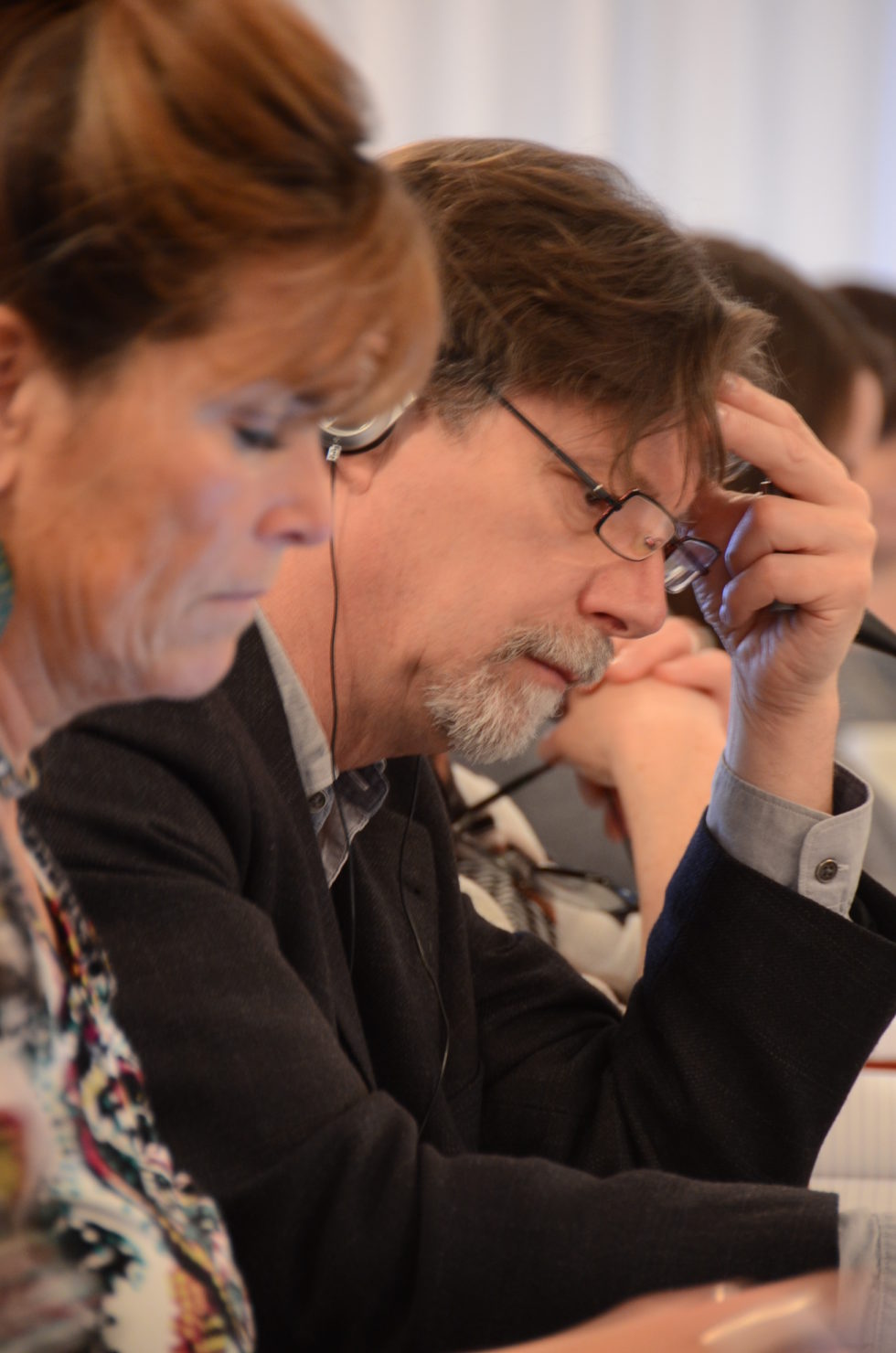
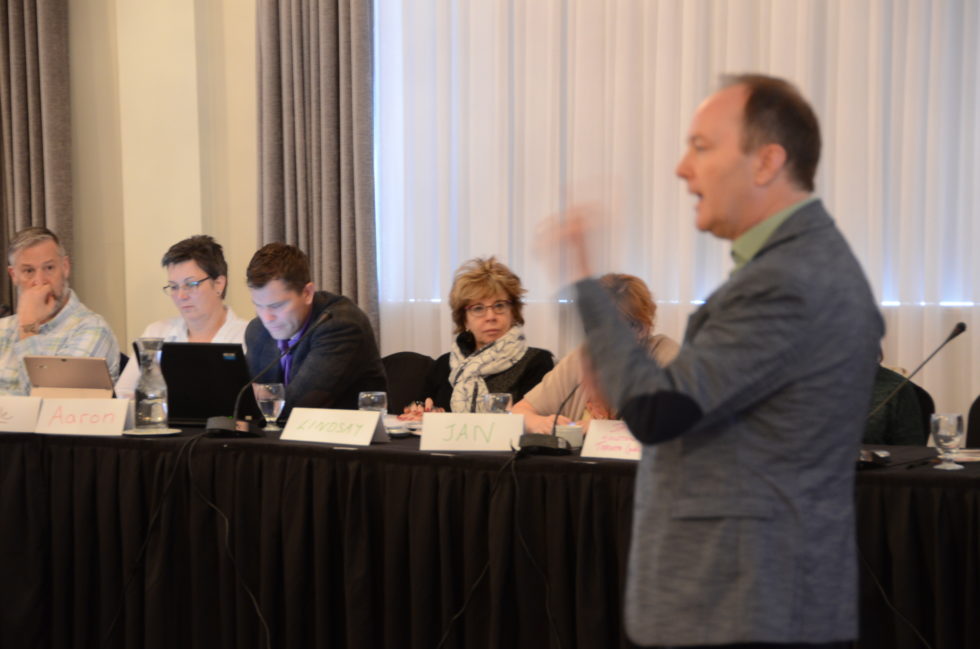
Patrick Smith delivers a presentation on the “Potential of Federated Organizations”
Posted on: November 23rd, 2016 by Waterloo Region Crime Prevention Council
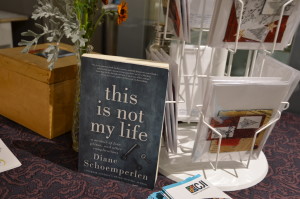 At first glance, Diane Schoemperlen’s memoir “This Is Not My Life: A Memoir of Love, Prison, and Other Complications” seems straight forward, in its own way, the stuff of TV shows and movies…. An author meets a fellow volunteer at a Kingston soup kitchen whom she knows has been is in prison, they become friends, they eventually develop an intimate partner relationship, they try to navigate the world inside prison and outside prison, they try to manage life together on the outside, the author leaves the relationship that has become abusive and spends the next six years healing and putting her life back together.
At first glance, Diane Schoemperlen’s memoir “This Is Not My Life: A Memoir of Love, Prison, and Other Complications” seems straight forward, in its own way, the stuff of TV shows and movies…. An author meets a fellow volunteer at a Kingston soup kitchen whom she knows has been is in prison, they become friends, they eventually develop an intimate partner relationship, they try to navigate the world inside prison and outside prison, they try to manage life together on the outside, the author leaves the relationship that has become abusive and spends the next six years healing and putting her life back together.
After spending an evening with Diane at the Turn the Page Book Club hosted by the Friends of Crime Prevention we have a deeper understanding of the complexity of this story. The story of their relationship covers tough issues tied to root causes of crime, such as family violence, sexual violence, and problematic substance use. Schoemperlen is unflinching in assessing her own motivations for staying in the relationship, as she comes to know the shadow and stigma that institutionalization casts over inmates and their loved ones.
Maybe slightly unorthodox for your average book club, Friends also brought together a community panel of Jennifer Hutton (Women’s Crisis Services of Waterloo Region), Chris Cowie (Community Justice Initiatives) and Shannon Moroney, author of Through the Glass to discuss the themes of the book in more depth and draw some direct applications to our community.
From the discussions between Diane & the panelist and the question/answer period with the community readers, we covered more content and topics than your average university course! Discussion ranged from childhood abuse/trauma to incarceration rates, from restorative justice to the lack of helpful prison programs, from reintegration challenges for released inmates to stigma faced by loved ones and family members of inmates, from abusive relationships to support networks for families of inmates, from the prison industrial complex to… well, I think you get the idea. Diane’s is a personal story that shines a light, not only on her own experience, but deftly directs a laser beam at the prison system in Canada. Diane skillfully tells a political story through her own story – a story that concerns us all.
Over the course of the discussion, people began to ask questions: What we can do to change a system that is clearly not working? Given that we have a federal prison for women right here in Waterloo Region, how can we help within our own community? How can we get involved?
We’ve pulled together a range of potential ‘calls to action’ and avenues for participating in creating change. Clicking on the links here will get you started.
If you decide to take some action, we would love to hear about it! Get in touch with Juanita Metzger to share your story.
Posted on: November 16th, 2016 by Waterloo Region Crime Prevention Council
When you host a public book club, you just never know how things will unfold, much less when you host one with the title “Prisons, Justice and Love”! But we couldn’t have had a more engaging night if we had tried!
Friends of Crime Prevention were pleased to host the first ever “Turn the Page” Book Club with Diane Schoemperlen in November 2016. Scroll through the photos below for a short photo essay of the evening together with community partners, neighbours and Friends.
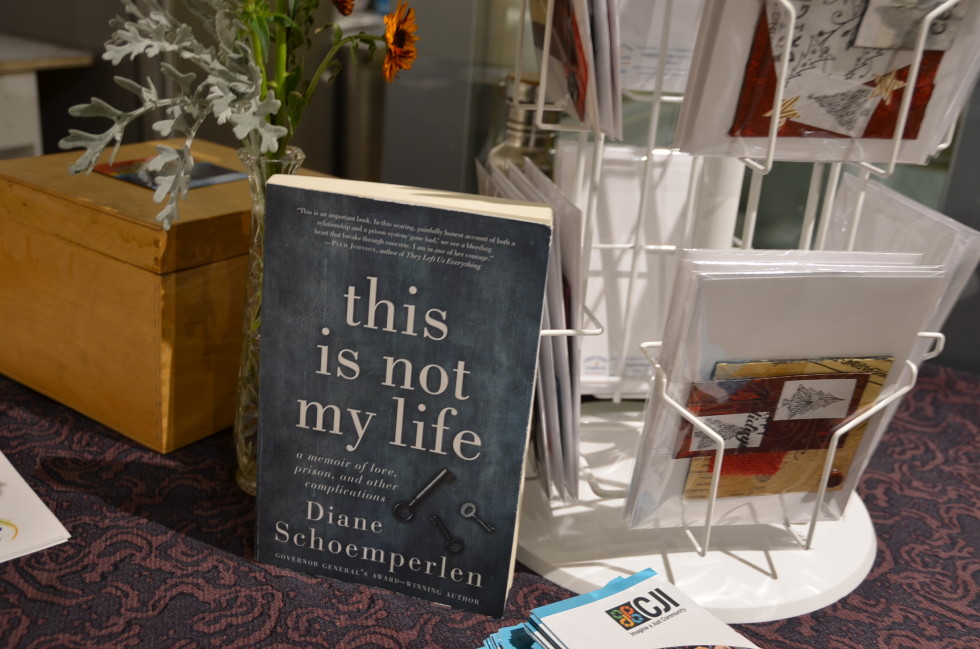
This is not my life by Diane Schoemperlen – our first book club selection for the Turn the Page Book Club focused on prisons, justice and love. A very entangled combination!
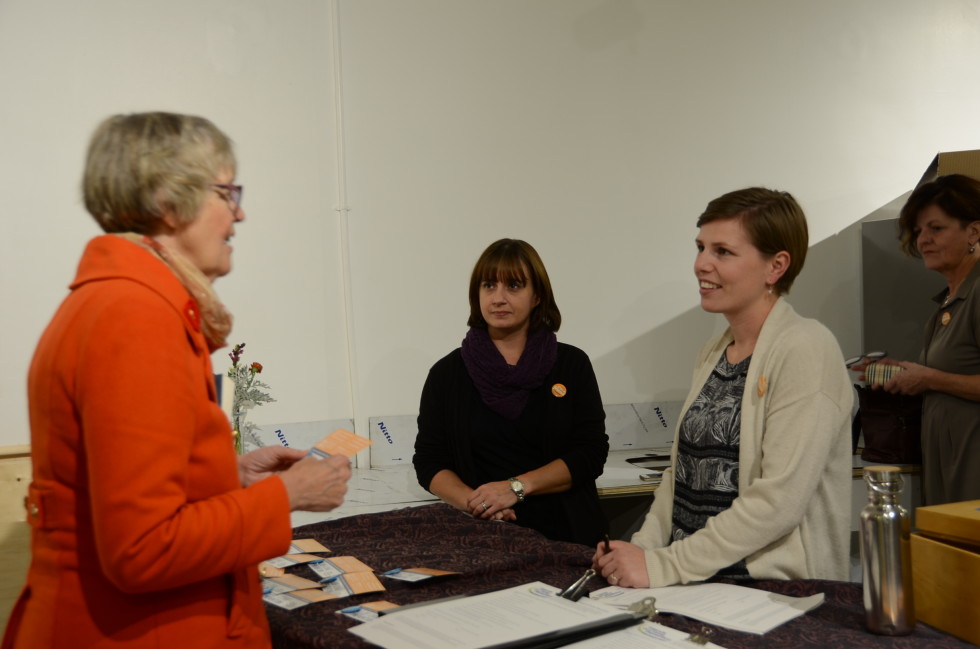
Friends of Crime Prevention, Jenn Robinson (middle) and Lisa Armstrong (right) were the most friendly greeters! Great to see so many new faces.
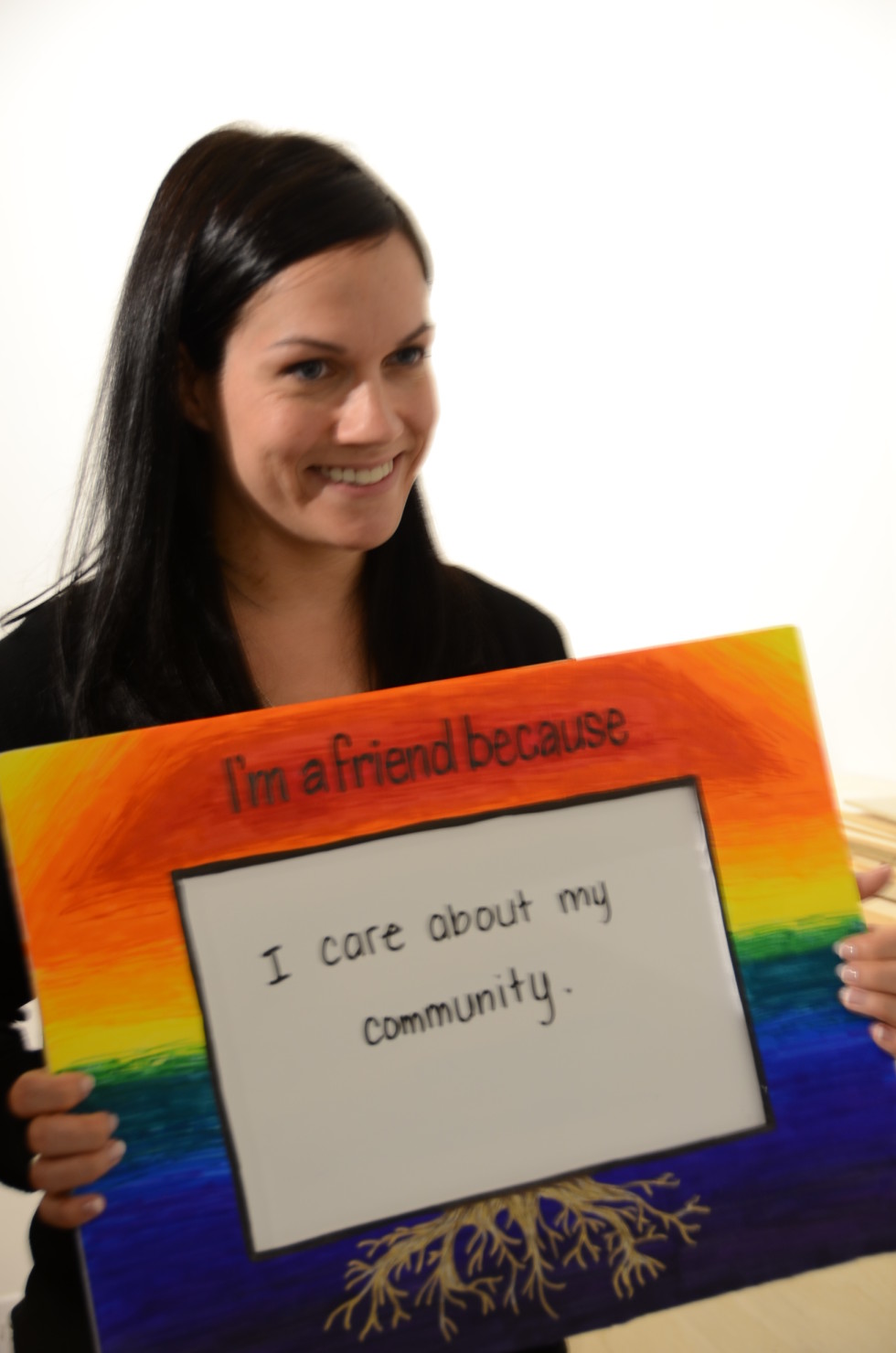
As people gathered for the evening, Friends of Crime Prevention had the opportunity to let us know why they are a Friend. Jeanean Thomas – because I care about my community
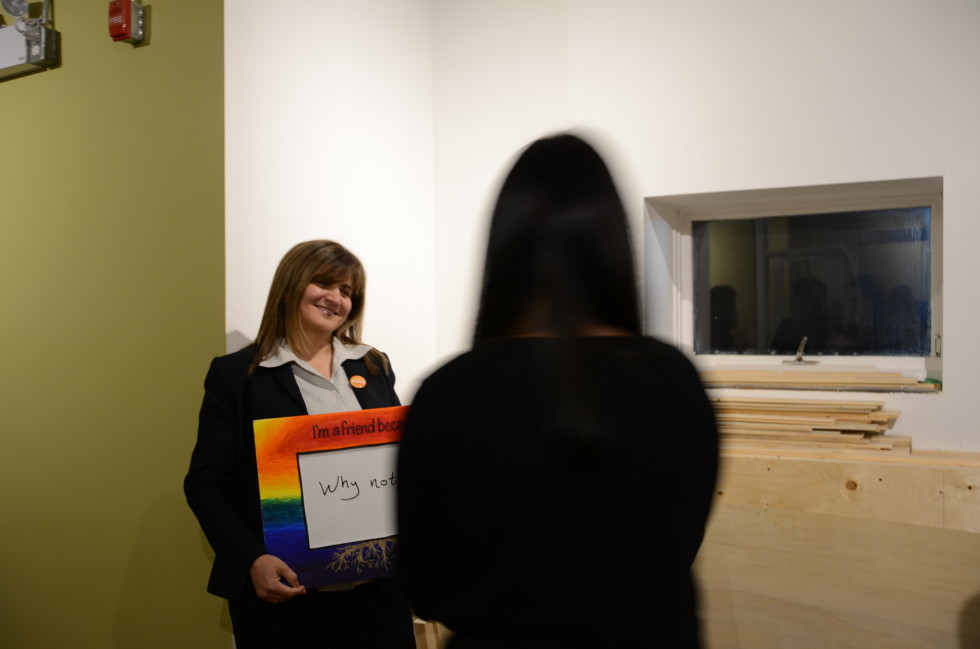
As people gathered for the evening, Friends of Crime Prevention had the opportunity to let us know why they are a Friend.
Pari Karem – Why not?!
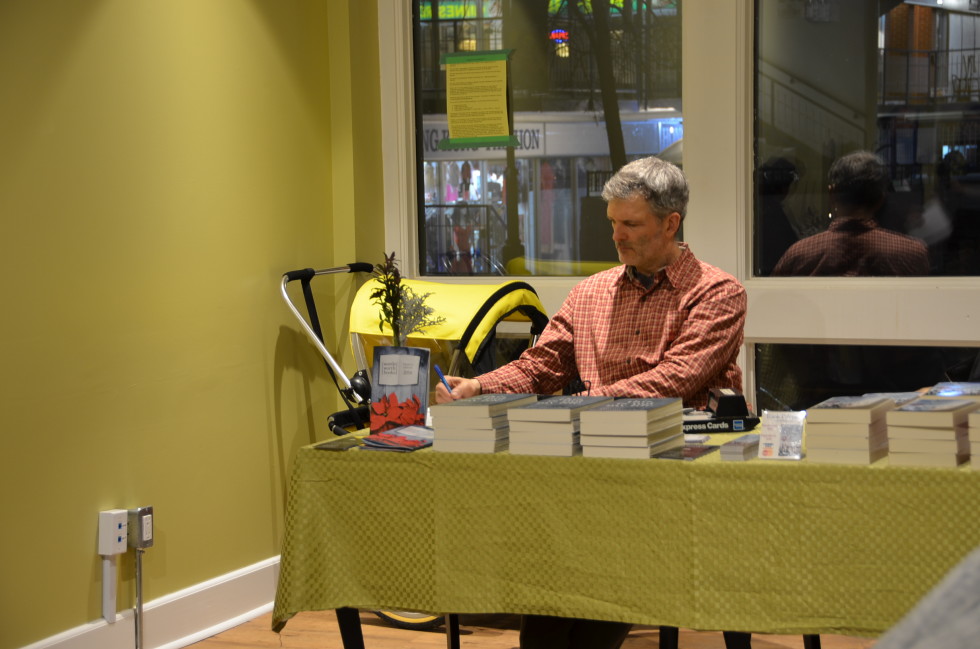
Thanks to John and Wordsworth Books for bringing extra copies of Diane’s book for sale!
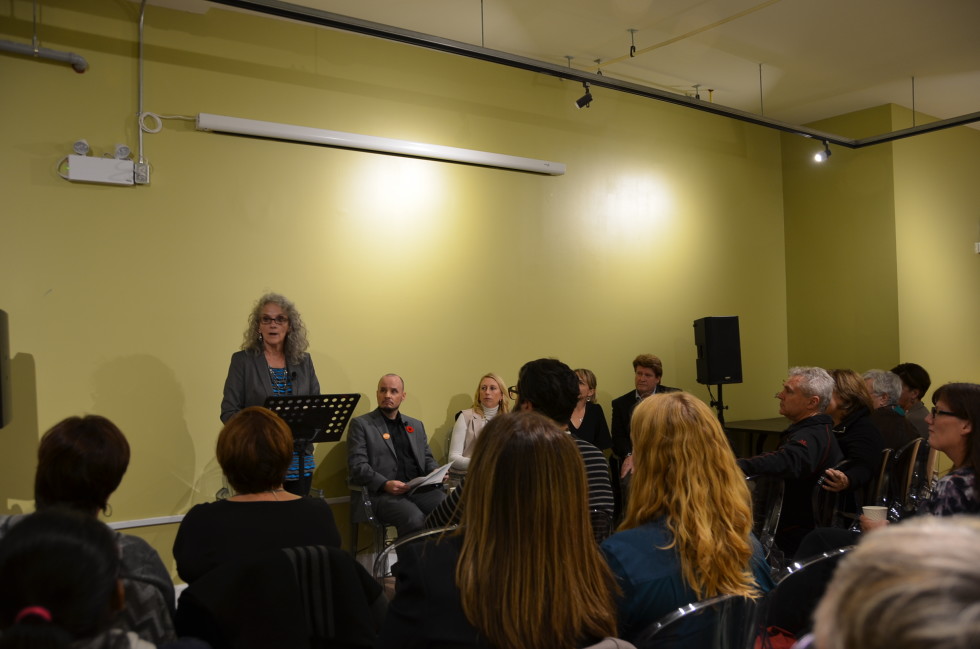
The inaugural Turn the Page Book Club was held at Fresh Ground, a new cafe & community space developed by The Working Centre.
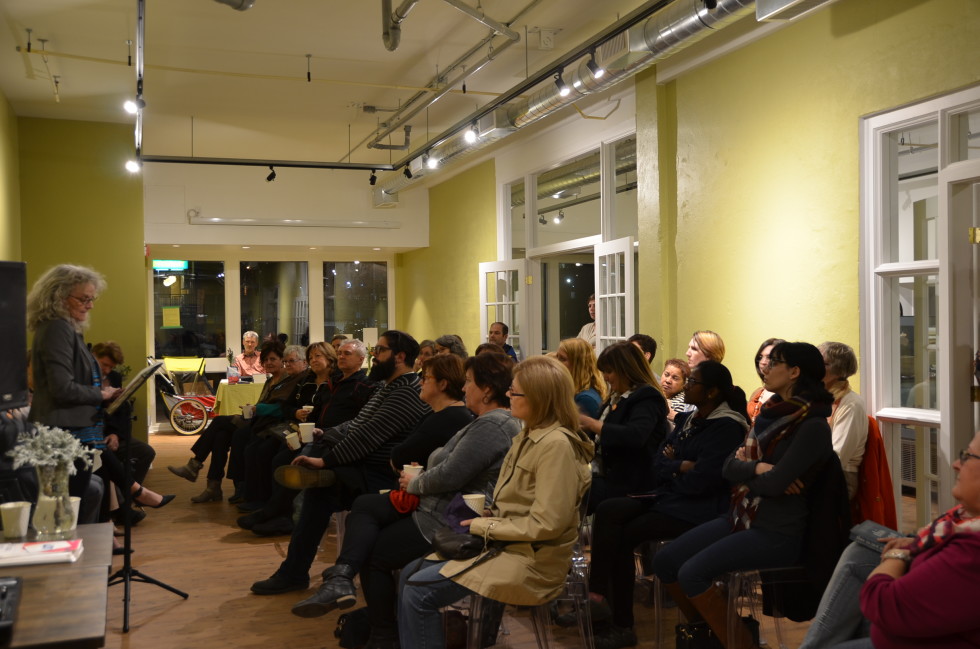
48 people gather to hear Diane read from her new book “This is Not My Life: A Memoir of Love, Prison, and other Complications.
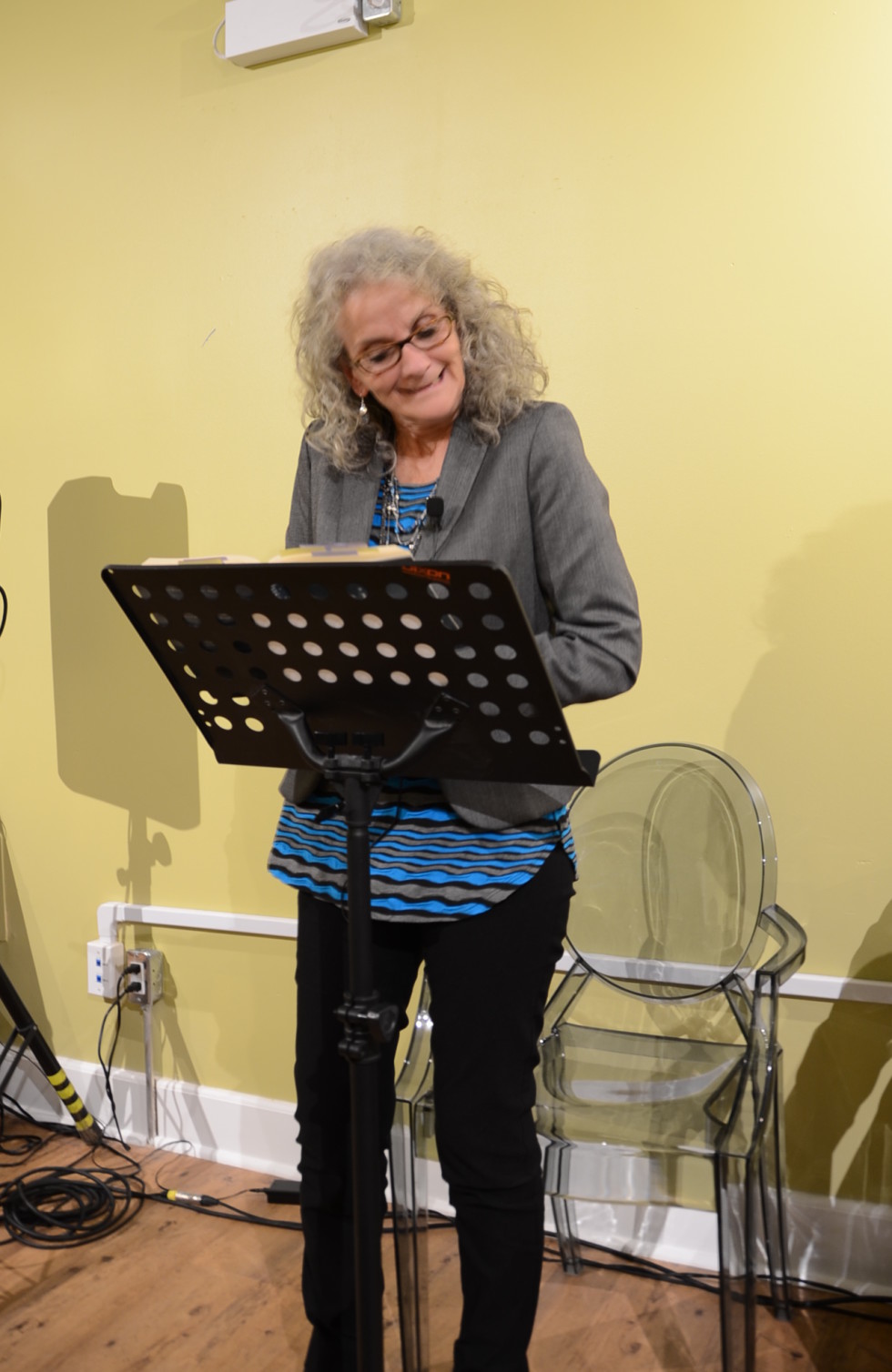
Diane reads the first line of the her book, a first line she is quite proud of! You’ll have to read the book to find out why this line still makes her laugh! Or listen to her interview with The Current on CBC Radio where the host reads it out loud.
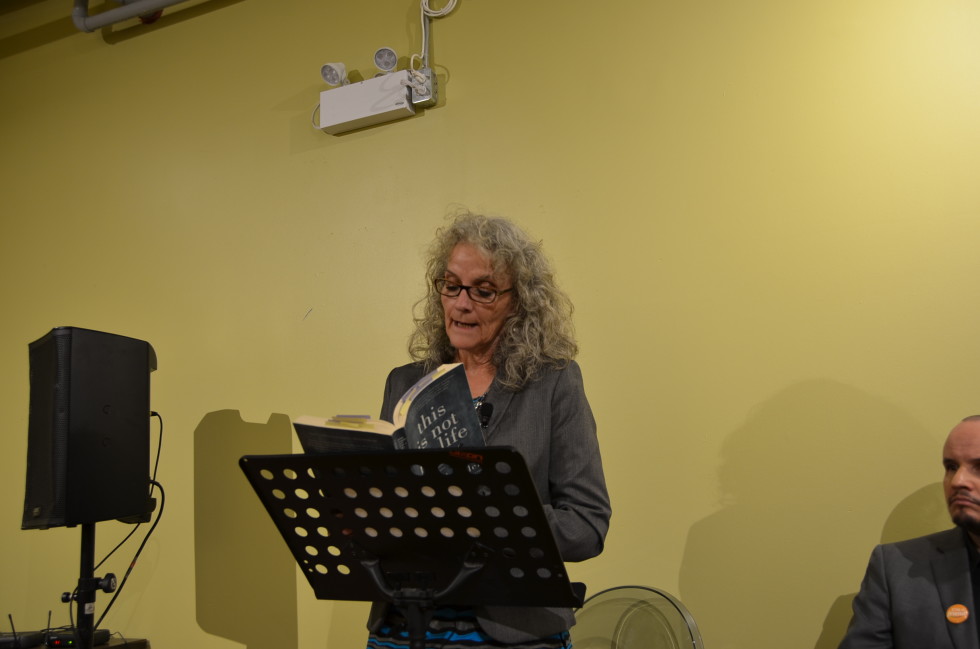
Diane reading some of the more emotionally challenging parts from her book.
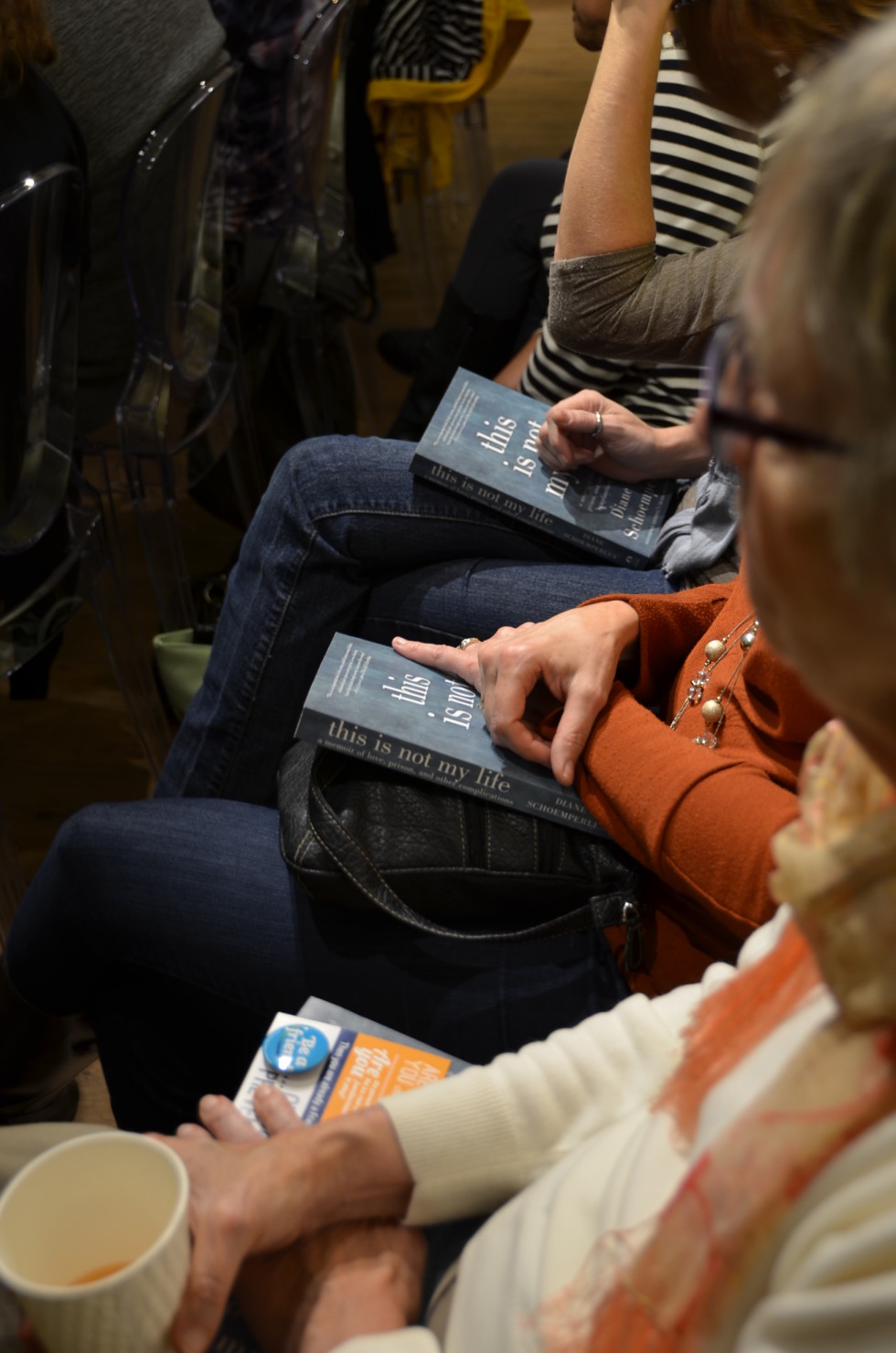
People came prepared! Many had read the book and had very insightful questions. Others came because of the topic, but bought the book by the end of the night!
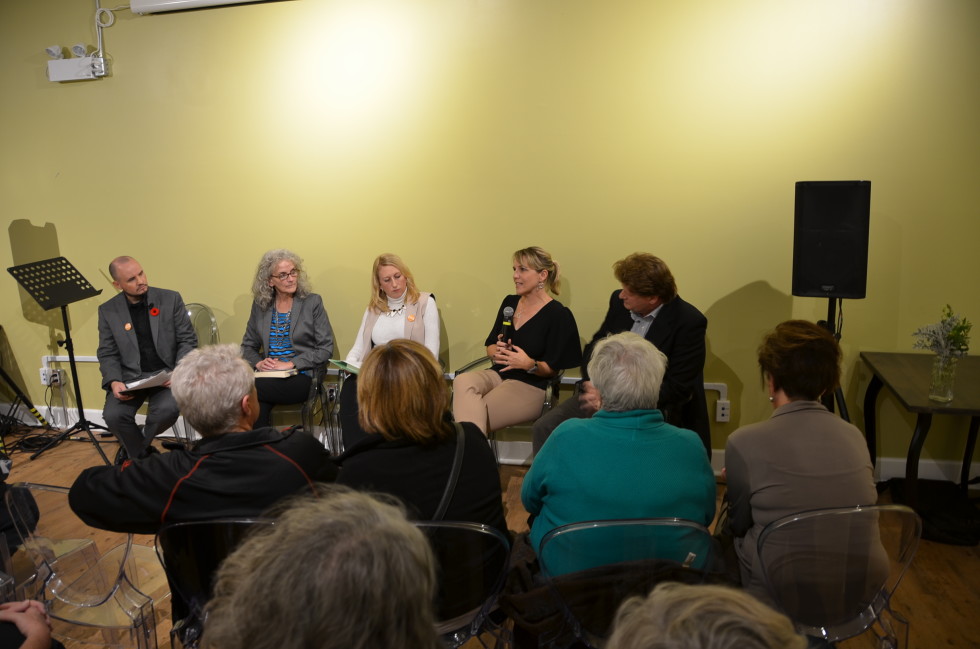
In addition to a talk and reading by Diane, we invited additional panel members from the community & beyond to complement the discussion of prisons, justice, stigma and relationships. From left: Mike Farwell, Moderator; Diane Schoemperlen, Author; Jen Hutton, Women’s Crisis Services Waterloo Region, Shannon Moroney, Author of Through the Glass; Chris Cowie, ED Community Justice Initiatives
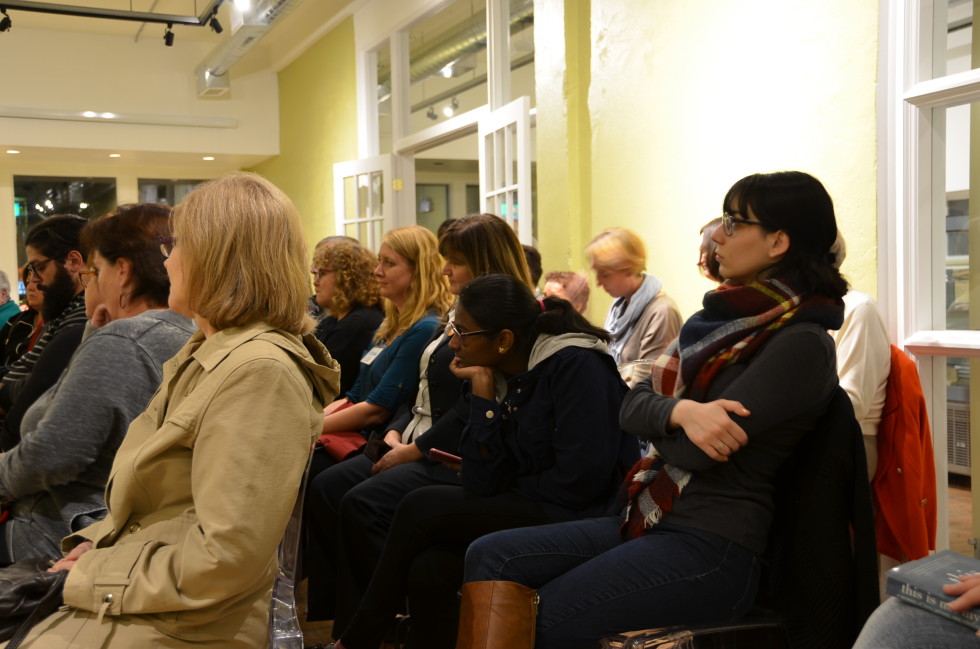
A very intent and listening audience!
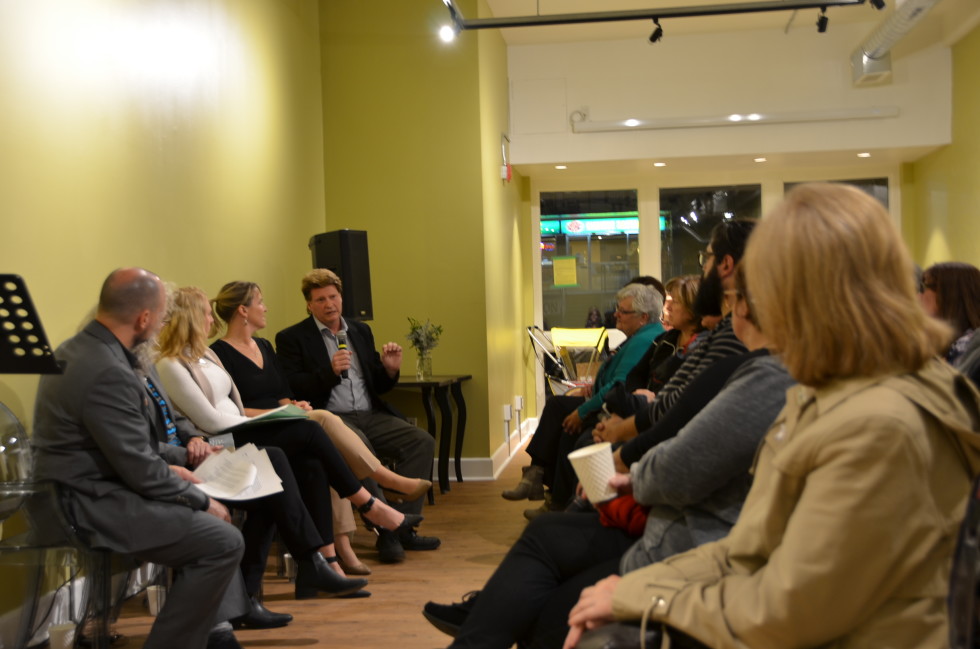
Chris Cowie from Community Justice Initiatives shared about the agency’s Restorative Justice mandate and how a more restorative process in prisons could help in countless ways i.e. better integration into society upon release, deeper understanding of the nature of offending, development of new skills to deal with conflict. Teaching and using restorative justice early can also be a prevention tool.
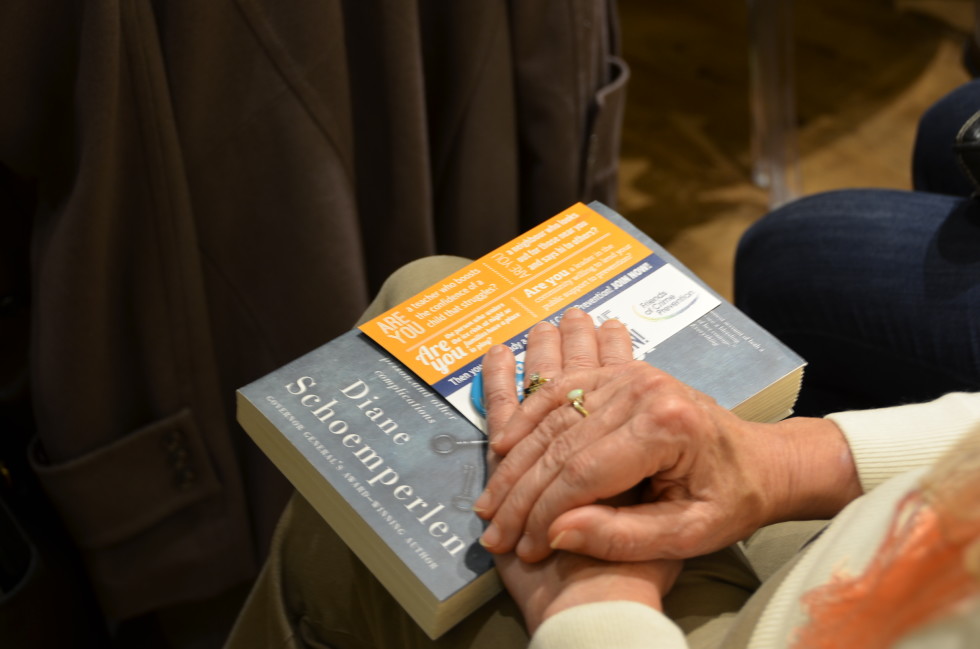
With all the new faces in the audience, it was a great opportunity for many to learn about w hat it means to be a Friend of Crime Prevention!

It only take a few minutes to become a Friend of Crime Prevention – just like Jen Hutton!
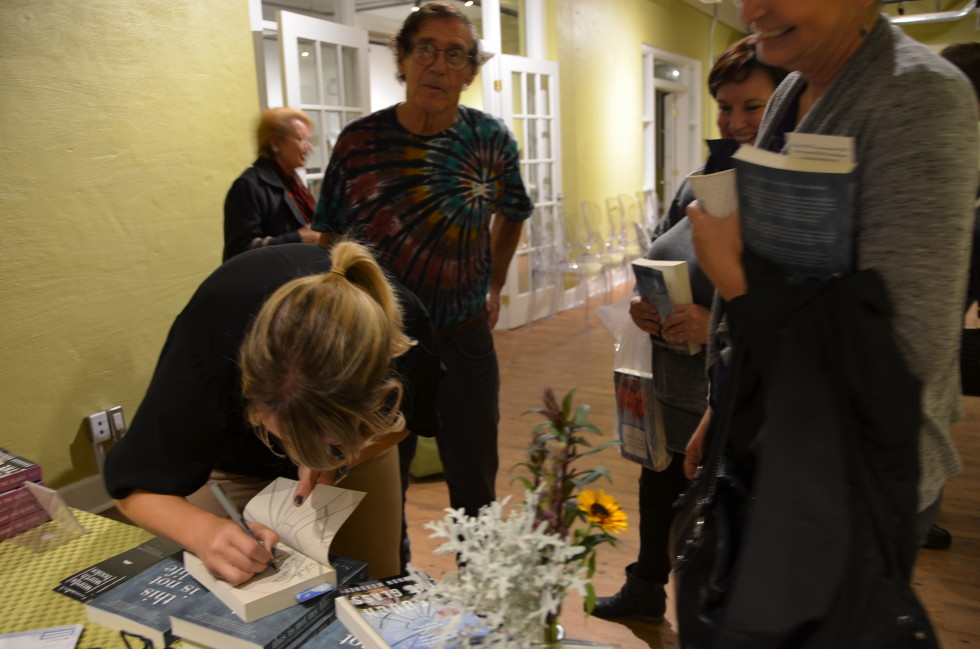
Both Diane and Shannon took time to sign books for anyone who wanted. Also a chance for great conversations.
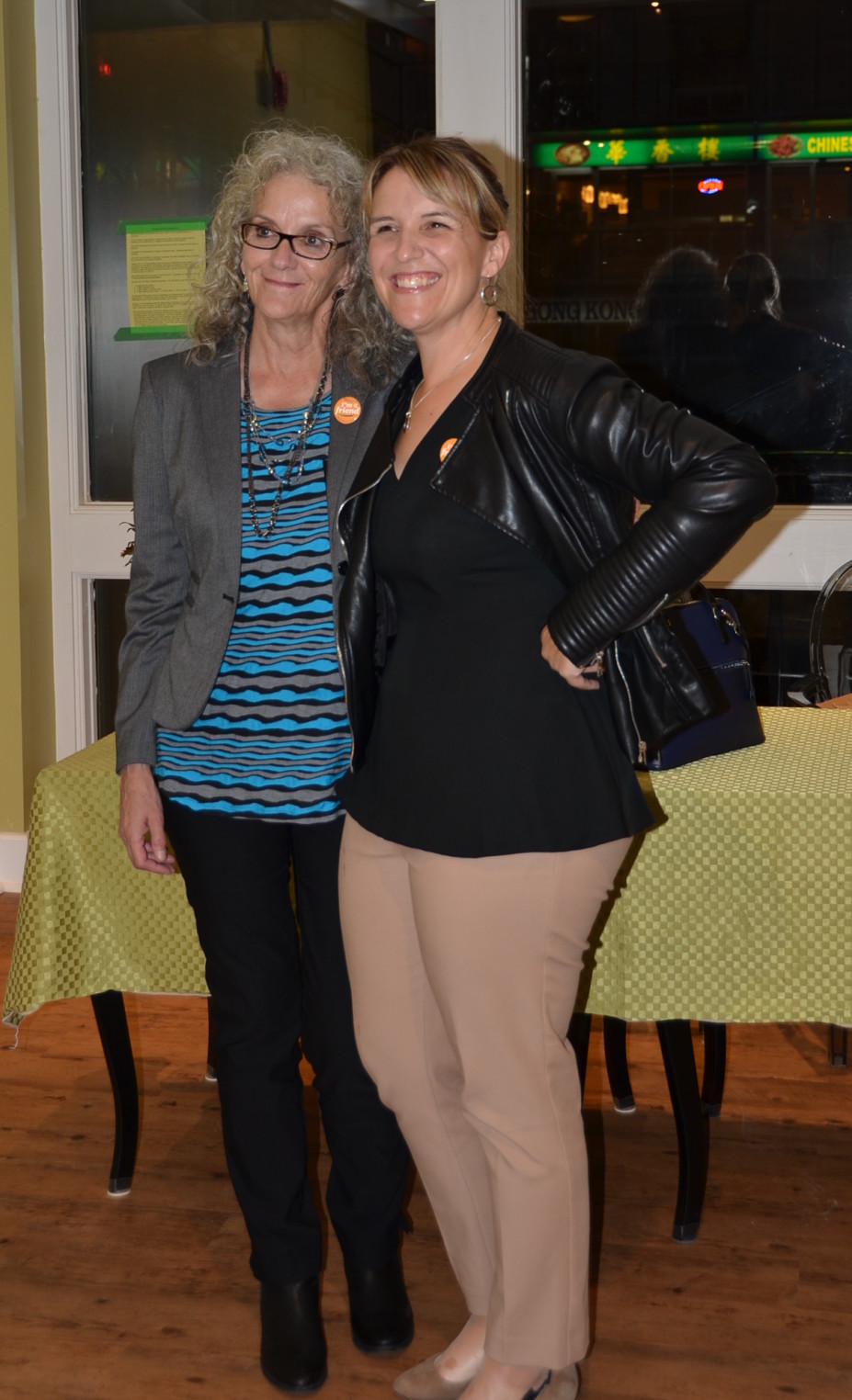
Diane and Shannon proudly display their “I am a Friend” buttons. Diane and Shannon were made honorary Friends and join Howard Sapers and Sir Neville, a guide dog, as Honorary Friends of Crime Prevention.
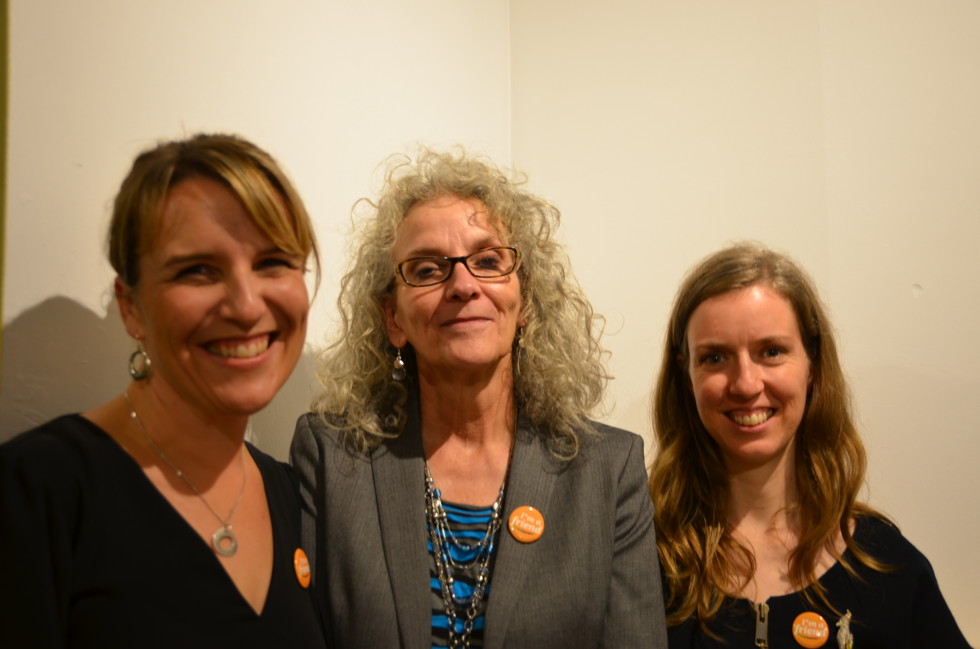
It was very special to have Shannon and Dianne together in the same evening. Shannon acted as a mentor to Diane during the writing of This is Not My Life. Shannon wrote her book Through the Glass about the life upheaval after husband confessed to the sexual assault and kidnapping of two women. Both Diane and Shannon have rich stories from which our community can learn so much! Diane and Shannon are pictured with Sarah Anderson, event organizer and facilitator from the Crime Prevention Council.
Posted on: March 25th, 2015 by Smart on Crime
Never have I seen such a beautiful collection of voices, all unique, and yet all singing the same tune. The Everyday: Freedom from Gendered Violence Symposium put on by the Social Innovation Research Group, and brilliantly detailed by Jay Harrison here, was a phenomenal representation of the intersection of research, arts, and community work. While the Symposium had a particular focus on the university experience, its messages are equally applicable in our neighbourhoods and communities as we think about crime prevention and smart approaches to the gendered violence that occurs in those spaces.
I don’t think I could ever do justice to the amazing topics that were discussed – responding to disclosure, the particular experiences of gendered violence faced by racialized and LGBTQ students, engaging men in prevention, and more. So, I thought the best way was to provide some insight from the speakers themselves:
“What does it mean to be safe?” –Dr. Jenn Root
I sat and thought, ‘good question!’ How can we talk about safety without first talking about what that means? Discussions of violence and crime prevention should always start at the roots.
“Public space is not equal for everyone.” –Tatyana Fazlalizadeh
This rang true for me. How many times have I called a friend or family member to pick me up because I didn’t want to walk alone?
“Did that really just happen?” –Dr. Michael Woodford
Dr. Woodford was speaking about the slurs and comments made to LGBTQ students. But for me, I was struck by the thought of how often we doubt ourselves, as well as our friends and our families when they tell us about something seemingly “minor” is said to them: ‘Oh come on, it’s not so bad…’
“Street Harassment is abuse.” –Tatyana Fazlalizadeh
Tatyana amazed me with this beautiful comparison of street harassment to domestic violence: if a man was yelling derogatory names at his wife, we would call it abuse. When women have cat-calls yelled at them from across the street, however, we tend to brush it off and ignore it.
“The kind of terrorism I want to talk about in this country is domestic violence.” –Judah Oudshoorn
While the media and our governments continue to feed us horrible stories of the atrocities occurring under the umbrella of terrorism, sometimes we forget about the atrocities happening much closer to home – maybe in our homes, maybe in our neighbour’s home.
“Sexual violence is a strategy of war – it is not just against the women, but also the community – it is an attempt to demoralize the community.” –Dr. Eliana Suarez
At the Crime Prevention Council, we often talk about the role of community as a building block for crime prevention. If sexual violence is designed to demoralize a community, then we, as that community, must take a leading role in preventing it.
“Either you’re violent, silent, or creating meaningful change. And if you’re silent, you’re violent.” –Judah Oudshoorn
What a powerful statement. I know which role I choose to play.
“Women are not just resilient, they are resistant – they attempt to change their circumstance.” –Dr. Eliana Suarez
“Maybe there is more than one way to be a man.” –Stephen Soucie
I felt these two quotes belonged together. Discussions around gendered violence often leave me feeling sad and hopeless. But these two spoke of hope, optimism, and change for both men and women.
“It is easier to build stronger children than to fix broken men.” –Stephen Soucie
Again, I felt another ray of hope. Through my research at the Crime Prevention Council, I have learned that early interventions have astonishing success in reducing rates of crime. This is where I think we should be investing our time, energy, and dollars.
“Compliance is important, but compassion is more important.” –David McMurray
An important reminder to wrap things up: while being “tough on crime” continues to get lots of media attention, we would be wise to look at the evidence base and the fact that the majority of “tough on crime” approaches do nothing to reduce crime. Early intervention, prevention that is proven to work, and renewed focus on humane approaches to rehabilitation and reintegration, would go much further toward reducing incidents of crime and victimization.
There were a myriad of other speakers who had insightful comments, but unfortunately, I am only able to present a small portion here. The passion in the room from each and every speaker was evident – from the researchers to the artists to the community workers. They all shared with us their struggles, and yet I came out the other side feeling hopeful and fulfilled. If they can commit themselves to this struggle, they must feel that it is important and that change can be made. As I move forward in working on my Master of Social Work thesis next year, which touches on this topic, I feel like maybe I can contribute a small portion to this struggle. Maybe, someday, we could live in a world where everyday, we were free from gendered violence.
“The struggle is real… the struggle continues” –Janice Lee
How are YOU contributing to the struggle?

Eleanor McGrath
Author: Eleanor is a Master of Social Work student at Wilfrid Laurier University. She is completing her first placement at the Waterloo Region Crime Prevention Council, working on a narrative literature review of how crime mapping can be used to implement community-based prevention initiatives. Her favourite hobbies are laughing, rock climbing, and travelling.
Posted on: February 25th, 2015 by Smart on Crime
That’s the response I usually get from friends and family when I tell them that I’ve spent the past two years coordinating a project to address gendered violence against university students. I generally concur with the exasperation, but am quick to point out that it seems unfair to expect to see less gendered violence on campus when relatively little has changed in how we address it on university campuses and in the surrounding communities in which university students live, work and play.
JOIN OUR 2-day Symposium
March 11th & 12th
Engage with campus and community participants on issues related to gendered violence against students in our community.
|
The Change Project, a university-community collaboration funded by Status of Women Canada and led by the Sexual Assault Support Centre of Waterloo Region has taken a long view approach to working toward safer campuses in our region. Over the past 2 years we have talked to over 650 students, staff, faculty and community stakeholders at Wilfrid Laurier University and the University of Waterloo as part of 2 separate needs assessments. The goal of this work has been to understand what our institutions of higher learning are doing well in terms of addressing gendered violence – both in its prevention and response – and what still needs to be done. Ultimately, our aim was to end gendered violence on campus through transforming the institutional and cultural climate of the universities and communities.
Both universities have remarkable capacity to address gendered violence and we have been inspired by the growing attention they have paid the issue over the course of the project. They are also aware of some of the gaps that need to be filled and have begun to demonstrate their capacity to do so in earnest.
What we have learned is that gendered violence – including sexual assault, sexual harassment, intimate partner violence, stalking, biphobia, transphobia and homophobia – is ubiquitous; that is, it happens wherever students are. For students in Waterloo Region that means they are encountering violence in their classrooms and residence buildings as well as in our community: our restaurants and bars, parks, buses, and neighbourhoods. In fact, previous research suggests that most incidents of sexual violence that students experience happen off-campus, outside of the geographic boundaries of the university. And students experience campus life socially, the social boundaries of which can extend quite deeply into our community.
I think this points to a need to look at gendered violence against students as a whole community concern. The efforts of our campuses to prevent gendered violence and support survivors will inevitably fall short if we do not start with a definition of the problem that takes the entire community as its focus and potential site of intervention. How we frame the problem will inform what happens next, who acts and how, and who is held accountable for ensuring student, and by extension community, safety. By broadening our frame of reference we also create an opportunity to draw connections between the gendered violence that is experienced by students with the violence experienced by other members of our community. I believe we can open new doors of possibility for developing truly innovative solutions to an age-old problem by connecting the capacity and knowledge that resides in the university with that of the community.
Are you interested in this topic? The Social Innovation Research Group invites you to join us for a 2-day symposium, Everyday: Freedom from Gendered Violence, March 11th and 12th to engage with campus and community participants on issues related to gendered violence against students in our community. Visit the SIRG website for more information about The Change Project.

Jay Harrison
Author: Jay Harrison is the coordinator for The Change Project at the Social Innovation Research Group. She has been working on issues related to gendered violence against students in Waterloo Region since 2005 when she was an undergraduate student at Wilfrid Laurier University. Jay works with social sector organizations in Waterloo Region and beyond to support their social change efforts through research and evaluation.
Posted on: May 14th, 2014 by Smart on Crime
The conclusion of the InREACH project has been the topic of many well-intended discussions at all levels of our community but we haven’t yet moved to the point of integrating the lessons learned to ongoing or upcoming projects.
 On Friday April 11th, the Waterloo Region Crime Prevention Council hosted “Engaging Marginalized Youth: Harnessing Experience from the InREACH Project” to provide a space for a diverse group of community members – individuals, agencies and neighbourhoods that were involved in the InREACH project – to begin moving from idea to action. Our community learned some very rich and important ‘lessons’ from the inREACH project and the gathering was intended to help the community determine “where do we go from here”. A number of promising ideas were brought to the table, but when all the focus is placed on the next steps, we have a habit of overlooking the negative and possibly dismissing the barriers that inhibit successful implementation.
On Friday April 11th, the Waterloo Region Crime Prevention Council hosted “Engaging Marginalized Youth: Harnessing Experience from the InREACH Project” to provide a space for a diverse group of community members – individuals, agencies and neighbourhoods that were involved in the InREACH project – to begin moving from idea to action. Our community learned some very rich and important ‘lessons’ from the inREACH project and the gathering was intended to help the community determine “where do we go from here”. A number of promising ideas were brought to the table, but when all the focus is placed on the next steps, we have a habit of overlooking the negative and possibly dismissing the barriers that inhibit successful implementation.
It’s easy to assume that we should apply what we’ve learned from the inREACH project to better support marginalized youth in our community. But have you every stopped to wonder, what happens if we ignore what we’ve learned? What if we shed the rose-coloured glasses and donned the shades of pessimism to see the barriers that stand in our way? What if we tried to see the glass half empty? How can we make a problem like street gangs in Waterloo Region, worse?
Well, let’s see…
- Never discuss inREACH again
- If you absolutely have to discuss inREACH, hold meetings at inaccessible locations when only few people can attend, and only invite individuals who have the power to tie up discussions with bureaucratic process
- Do NOT, under any circumstances, collaborate or foster relationships with other youth serving organizations because it just makes things messy
- Scrap the evaluation and stick it on a shelf. Treat it like it is only the opinion of the evaluator anyway and discredit it
- Speak FOR the youth; adults and service providers know best. Youth are just too young and don’t know what they want
- If anyone asks you about inREACH, only talk about the numbers – how many youth participated, how many completed, etc. Don’t tell the personal stories of change
- Cut funding for youth programs and foster competition over limited remaining resources…. Better yet, just close the services
- Ensure that the remaining youth services only exist in silos and it is really difficult for youth to access them
- Never convene collaborative opportunities for our community to talk about improving our services
- Burn the rest of the inREACH posters and brochures so the program is effectively erased from our collective memory
- Don’t recognize the contributions of all youth in our community and only hand out awards to those that excel at everything
- Use only images that stigmatize youth
- Keeping focusing on the closure of inREACH as a sign that we can do nothing more for youth
Are you getting the picture? Are you thoroughly depressed by the very thought of these ideas?
I’ve used a technique here called ‘reverse brainstorming’ (with some dramatic effect), to emphasize how ridiculous it would be if we ignored what we’ve learned from inREACH and along with it, the potential for positive change. But the important thing here is that it’s not too far fetched if we really do nothing with the gift of what we’ve learned through the inREACH project. The reality is, our region is a growing community and is very close to larger urban centres. We need to keep a focus on prevention approaches so that street gangs do not become a larger problem in our community.
In a reverse brainstorming exercise, those involved would take each spine shivering negative option and flip it to the positive. That is essentially what happened at the “Engaging Marginalized Youth” event but what to do with it? How do we bring all of these lofty suggestions and grand themes together to collaboratively apply the lessons of InREACH? What can we base our practice on?
While the community is working to shape the next phase of work work with marginalized youth, I offer this resource as food for thought. WRCPC has found the work of Tom Wolff, community psychologist, to be inspiring, grounding, and effective in establishing collaborative practice. He presents six principles of collaboration (Wolff, 2010):
- Encourage true collaboration as the form of exchange
- Engage the full diversity of the community, especially those most directly affected
- Practice democracy and promote active citizenship and empowerment
- Employ an ecological approach that builds on community strengths
- Take action by addressing issues of social change and power on the basis of a common vision
- Engage spirituality as your compass for social change
With these six principles in mind, how can we revisit the reverse brainstorming activity above and critically challenge ourselves? Are we using these principles above in our process of applying and disseminating the lessons of InREACH? We can develop our practice to include marginalized youth. inREACH showed us that. We would love to hear your suggestions and thoughts for next steps either through comments below or during future meetings.
If you’re interested in reading more about the “Engaging Marginalized Youth” event, a summary of the event discussion & next steps is available. WRCPC will do its part in continuing the discussion and they are looking to the community to take further leadership. For more information please contact the Waterloo Region Crime Prevention Council office, by email or telephone, 519.883.2306.
Author: Ryan Maharaj, MSW Student with WRCPC. Ryan recently moved to Waterloo in pursuit of his Masters in Social Work at Laurier University. Placed at the Crime Prevention Council, he has been given the opportunity to explore the role of male allies in the movement against sexual and intimate partner violence. He firmly believes that with respect, support, compassion, and education we can prevent the occurrences of sexual violence in the next generation.
Posted on: February 5th, 2014 by Waterloo Region Crime Prevention Council
In the first part of our follow up to the Snapshot on Crime series, we shared some themes and commonalities we found in the informative, thought-provoking responses of community residents and leaders to the report – A Snapshot in Time: The Root Causes of Crime in Waterloo Region. Each contributor reflected on local data in the report concerning one social, community or economic circumstance associated with increases or decreases in crime. We shared powerful quotes from contributors illustrating the importance of individual actions, and the need for transformative changes, like changes in attitudes, in order to address the root causes of crime. There was so much to share, we couldn’t fit them all in to one blog post. Read on….
Multiple Interconnected Roots Require Holistic Approaches
The connections between social, economic and community circumstances and crime are complex. There are often multiple circumstances that adversely impact people and communities requiring coordinated, holistic responses to the interconnected roots of crime and victimization.
For example, Jill Stoddart explains that children in care of child welfare “often come from disadvantaged families and have been subjected to maltreatment and neglect” and thus “are often at higher risk of involvement in the youth justice system, homelessness, substance abuse” and other problems.
While being young and male is associated with an increased risk of crime and victimization, Rohan Thompson from the inREACH gang prevention project says “the vast majority of youth crime is being committed by a small number of young offenders.” Further, these youth “have lived and been exposed to risks most of their young life, so participation in a gang is just the symptom of deeper more complex issues…” requiring “a holistic long term approach.”
Since “length of involvement in schooling significantly impacts participation in criminal activity,” school boards go to “great lengths” to decrease the number of residents without a high school education. David DeSantis gives examples of Catholic school board initiatives such as the “Supervised Alternative Learning programs [that] allow students to work full-time, get mental health supports, volunteer hours and accumulate credits.”
Challenging the way root causes are framed
Some writers questioned or re-framed the indicators defined as root causes in the report.
Julie Philips for example, questioned the association of higher crime rates with higher proportions of single parent headed households.
“…children and youth from fragmented households are perhaps just as likely to commit crime as lone-parent offspring. What do I mean by fragmented? A two parent family, where the parents… at the end of the day are too tired, burned out and stressed, leaving little time or energy to actively engage their children. “
Innovative responses
Waterloo Region’s reputation as a social and economic innovator was clearly demonstrated by our community’s innovative responses to root causes.
Sue Klassen tells how “restorative justice reduces fear of crime.”
“She [victim] learned that Brianna was not the monster that she had imagined her to be, but a troubled young woman who had been the past victim of rape and abuse, trying to turn her life around. Carol’s fear was transformed.”
Aaron Stauch says that although unemployment rates are improving, this “masks some concerning trends for specific segments of our workforce. Unemployment for youth, new Canadians…and older workers has remained high.” “..There are many local organizations implementing innovative ways of addressing these employment challenges.”
Moving Upstream
Many writers emphasized the critical need to focus more attention on preventing problems from occurring in the first place.
Amy Romagnoli explains that many community organizations “place great value on early child development as an up-stream approach to preventing negative child outcomes…Programs that promote and offer early learning opportunities need to be prioritized, implemented and given a chance to prove their value in the long term.”
So… where does all this leave us?
First, the good news, crime rates have been steadily falling in Waterloo Region and the Snap Shot in Time report shows Waterloo Region is committed to paying attention to the root cause of crime. “A continued diligent effort to monitor and intervene in the root causes of crime is a powerful tool for ensuring that this trend can continue into the future.”
The overall picture, as illustrated in the report, for Waterloo Region is mixed. Some statistics are positive, such as higher rates of social capital compared to Ontario or Canada. In some areas, such as the percentage of people without a high school education, we are doing about the same. Yet in other areas, like some early childhood indicators, we are falling behind. The picture is incomplete though as some key indicators, such as alcohol consumption and recreational substance use cannot be tracked due to lack of reliable data.
Community residents and leaders described the important work being done in our community to address the root causes of crime and victimization and to build a safe and healthy community for everyone. They shared their insights, stories, and calls for action. One of the important messages is that everyone can make a difference – so join us!
What more do we need to do? Considering all the good efforts already under way, are you satisfied with the work of the community or would you like to do more? Is there a particular area in which you would like to see our community put more collective and concentrated effort?
Essentially…. Where do we go from here? Speak up community, you’re great at this! And you’re great at making things happen too.
Where would you like to get started?
Posted on: February 4th, 2014 by Waterloo Region Crime Prevention Council
How do we get at the root causes of crime and prevent it from happening in the first place?
This isn’t a direct, straight answer, but, the Waterloo Region Crime Prevention Council believes part of the solution is to monitor the root causes of crime over time. Then we, as a community, can better understand and address the social, community and economic conditions associated with crime and victimization. Check out the Waterloo Region Crime Prevention Council’s report – A Snapshot in Time: The Root Causes of Crime in Waterloo Region to find out how we are doing in early childhood development, employment, community trust and other important indicators.
In the months following the report’s release, community residents, leaders and experts wrote blogs responses to share stories, insights and examples of how our community is responding to the root causes of crime outlined in the report. When we read all the fantastic community responses together like a book, we started to notice some themes and commonalities.
Individual actions matter
Many blogs responses focused on the importance of individual actions in building a safe and healthy community. Volunteering, owning a home and having a stake in a healthy neighbourhood or simple acts of noticing instead of “pretend(ing) to be an island” all make a positive difference .
Waterloo City Councillor, Karen Scian, tells a moving story of her encounter with a ‘squeegee kid’ at a red light as a way of illustrating how social capital (positive connections between people) is something we can all build and that protects against crime.
“His green eyes instantly reminded me of [my son] Peter. What if? …I…called him over…We chatted…and [I] gave him paper money. I gave him my business card. I asked him to call his mom…He thanked me again and told me that he was going to get something to eat and that he would call his mom…I had to hope.”
Higher levels of home ownership also serve as a protective factor against crime. Local realtor Keith Marshall is optimistic since “we are trending well in Kitchener-Waterloo. Crime is down. Homeownership is up. Neighbourhoods that were considered unsafe and decaying fifteen years ago are transforming into sought after and vibrant places to live.”
Calls for transformative changes to address root causes
Many contributors spoke passionately of the need for deep structural changes in our communities and systems in order to transform the social and economic conditions that contribute to crime and victimization.
In reflecting on the “deplorable” rates of violence against women and the need for a larger shelter in Waterloo Region in recent years, Mary Zilney asks:
“Why doesn’t our government create a system whereby the women and children remain in the family home and the abuser is removed? …Instead of building bigger shelters, we need to turn our minds to how we collaboratively eradicate violence against women.”
Part of the solution lies in changing attitudes and awareness
Many contributors agreed that part of the societal transformation required to address the root causes of crime and build healthy communities is changing attitudes so that all people are valued and treated with respect and understanding.
Sara Casselman writes about an innovative program to reduce incidences of sexual assault that works “with men in positions to influence male youth.” This program “encourages young men to treat women with fairness, equality and respect and to stand up and speak out on gendered violence.”
Sheri Cartwright, a community volunteer, reflects on the connection between homelessness and the increase in victimization and minor crimes among those who are without a home:
“when we provide those in need with stable housing we give the opportunity to live with dignity, reduce crime, reduce addiction and give the opportunity for better success. It is a win, win situation…We need to put as much effort into creating awareness and fundraising for this as we do when collecting food and socks.”
According to Mary MacKeigan who writes about the income of low income families and individuals:
“the root of all root causes…is the stigmatization of people living in poverty. Societal attitudes / values impact our political voting choices and influence policy decisions…. if enough of us TRULY believed that everyone was a valuable member of society, we’d have much better policies in place that reflect that belief.”
Thank you to the community contributors for sharing these insights and calls to action. There’s more to come. Tune in to the next blog for part two of The Community Weighs in on the Root Causes of Crime. We’ll review the some more themes and provide additional reflections and food for thought.
Posted on: October 15th, 2013 by Smart on Crime
Surprise!! Surprise!! “Length of involvement in schooling significantly impacts participation in criminal activity”, reports the recently released Snapshot on Crime: Root Causes of Crime in Waterloo Region. It is good to have the statistical evidence to corroborate what we already know as parents, teachers, and concerned citizens.
To reframe, length of involvement in schooling increases positive life outcomes for youth. High school graduation and access to post secondary education enhances socioeconomic status in adulthood regardless of growing up in a low income family, parents’ level of education or single parent household. Good news. Although, being born poor sucks, it is not a life sentence. Education however is a big deal and exclusion from it puts you firmly on the school to jail pipeline. Education is the great leveler only if you have it, a child denied this basic human right is hurt for life and community safety is impacted. Access to post secondary education reduces the likelihood of adult criminality, increases employability, ability to stay employed and overall socio economic status. Access to education is a matter of equity and social justice, therefore addressing systemic exclusion and disenfranchisement is crucial.
This is nothing new. The Ontario Royal Commission on Learning and the Review of the Roots of Youth Violence report all decried non inclusive curriculum and recommended schools that reflect minorities and policy changes to address lack of engagement and under achievement of young males, black males, in particular. If black boys face more exclusion from the school system, youth who drop out of school are at higher risk for criminality. Black males are overrepresented in the criminal justice system; it then becomes imperative to challenge our beliefs about black boys being inherently criminal. Being young is a not a bad thing. I have yet to meet any person who was never young once. Being a male child is not bad either and there are communities where people go to any length just to have a male child. Being black is no disaster despite the media characterization of Black masculinity. But still, black males are more often the targets of physical aggression, racism, criminality and criminal victimization.
The African community always knew this. Ten years ago, we initiated an after school homework support program to promote school retention, graduation, equitable access and participation. The homework club provides a safe space where any minority child can feel at home to receive help right where they are at and develop the confidence that facilitates integration into the school system. Our neighbors in Toronto successfully advocated for Africentric schools and now have three, amid fierce debates on both sides. I do not intend to spark debates about segregation or integration. Both are not mutually exclusive.
Through our homework program, we work to mitigate the gaps in the mainstream schools. We provide culturally relevant books, resources and instructional materials that honor African and indigenous orality. We connect youth with strong black role models through career talks, job shadow and motivational talks. We immerse our volunteers, white and black, in the culture and life of the youth. Many volunteers come in wanting to help the kids, but they tell us when they leave (some never leave) that they are the ones helped significantly. Many of them want to be teachers and we gladly provide them with reference letters to get into teachers college. We also organize a parent forum to encourage parents to be their child’s best advocate, to understand the assumptions behind the streaming of students that can result in some youth not having the courses required for post secondary education which hinders their ability to maximize their potential and can permanently alter their life trajectories.
Waterloo region is now the 7th top destination for new immigrants and refugees. We cannot reverse the inflow of immigrants as immigration is Canada’s lifeline in the absence of a replacement population. We could admit only people who are not 15-24, male or black but, 20-somethings tend to settle down and have cute little babies, who soon become teenagers. What if we as a community ensured teachers are trained to recognize the world views and assumptions underlying the fear of big tall black boy children? What if teachers, police and other service providers re-examined our social construction of the black male child? Are there things Waterloo Region can learn from Toronto’s Africentric schools about how to adapt and integrate African, indigenous epistemology and pedagogical practices into mainstream schools so that we can better engage young black men? Opponents of Africentric schools describe them as temporary, not cost effective solutions and appeal to our Canadian ideals of cohesion and multiculturalism. I do not agree with either segregation or integration but cohesion and multiculturalism are myths if they exclude some and attempt to promote assimilation under the guise of integration.
Our homework club struggles for lack of funds but the reason it continues year after year is because the children keep coming back for the acceptance, respect, honor and understanding they receive there.
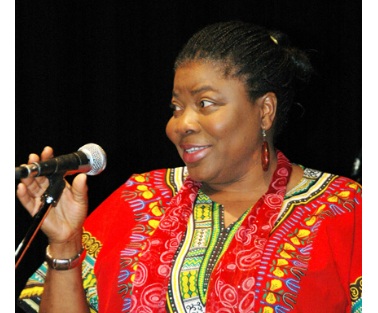
Funke Oba
Author: Funke Oba is the immediate past president of the African Canadian Association of Waterloo Region & Area. Funke teaches social work, is a diversity trainer/consultant and community based researcher with a focus on social justice, equity and social construction of complex phenomena.
Find more community responses from colleague’s in Waterloo Region who also work with young men:
Posted on: October 10th, 2013 by Smart on Crime
The Snapshot in Time: Root Causes of Crime in Waterloo region data on Young Males 15 – 24, by itself, is good information to have but I don’t think that an increase in the population of males aged 15-24 is any reason for alarm. The data clearly shows that the rise in the number of males aged 15-24 across the Region, as a percentage of the population, is holding steady at 7.2% to 7.4%. We also know that the vast majority of youth crime is being committed by a small number of young offenders. With this information, it gives us sense of size and scope youth male crime/victimization. As a community, we should be taking a strategic/focused approach, first to determine what the root causes of crime are as it relates to this cohort. Secondly, what are some of the best/promising practises that can be done prevent young males from being involved in crime and being victims of crime in the first place.
inREACH, a youth street gang prevention project, is an initiative that is designed to work with young men and women who are involved or at risk of being involved with gangs. inREACH is comprised of two program phases, Community Treatment & Community Mobilization. The Community Treatment phase provides 1-on-1 support in areas of mental health, addictions, employment and overall case management. 94.2% of the participants in the Treatment phase are male with the average age being 18.7 years old, with risk factors such as gang involvement, severe addictions, criminal justice involvement and living/lived in care, it is clear that inREACH is a program that has found away to connect with some of the most at risk male youth in our community. The Community Mobilization phase, happens in four communities through out the region and is focused on prevention. Youth Workers engage youth in these communities by finding out what there strengths/interests are, working with the youth to develop the programs and lastly, having the youth play a key role in the delivery of these programs and having a say in any key decisions about the programs. inREACH has managed to be successful for several reasons. inREACH a multi-disciplinary project, that provides client centred, wrap-around supports to young people that we see as assets to our community and having more then just deficits. inREACH is a collaborative project and all of our community partners are fully engaged in working to address the issue of youth gangs in our community.
There is a lot more that can and should be done. I think that Federal, Provincial , Municipal governments and funding organizations should be focused and work collaboratively to support and enhance all of the work that is being done front line to address the issue of youth gangs, male youth violence & victimization. The majority of inREACH program participants were male, from single parent homes, unemployed and already involved with the criminal justice system. If we use a prevention lens, we know that these youth didn’t just wake up one day with all of these risk factors. They have lived and been exposed to risks most of their young life, so participation in a gang is just the symptom of deeper more complex issues. We need programs that aren’t cookie cutter and pre packaged, we need to develop, support and enhance programs that take a holistic long term approach to supporting our most at risk youth. At the end of the day, they are all of our youth and we have a collective responsibility to ensure that they stay safe, not become criminally involved and are also supported so they can become potential that is fully realized.
Author: Rohan Thompson is the Project Manager for inREACH and staff of the Waterloo Region Crime Prevention Council. inREACH is a collaborative, multi-disciplinary program designed to intervene/prevent gang involved or gang vulnerable youth from being involved in gang activity or exiting their gang. Rohan has been involved in working with at-risk youth for over 15 years. He is an avid football fan and is a proud supporter of Wilfrid Laurier Football.
Find more community responses from colleague’s in Waterloo Region who also work with young men:












































 On Friday April 11th, the Waterloo Region Crime Prevention Council hosted “Engaging Marginalized Youth: Harnessing Experience from the InREACH Project” to provide a space for a diverse group of community members – individuals, agencies and neighbourhoods that were involved in the InREACH project – to begin moving from idea to action. Our community learned some very
On Friday April 11th, the Waterloo Region Crime Prevention Council hosted “Engaging Marginalized Youth: Harnessing Experience from the InREACH Project” to provide a space for a diverse group of community members – individuals, agencies and neighbourhoods that were involved in the InREACH project – to begin moving from idea to action. Our community learned some very 